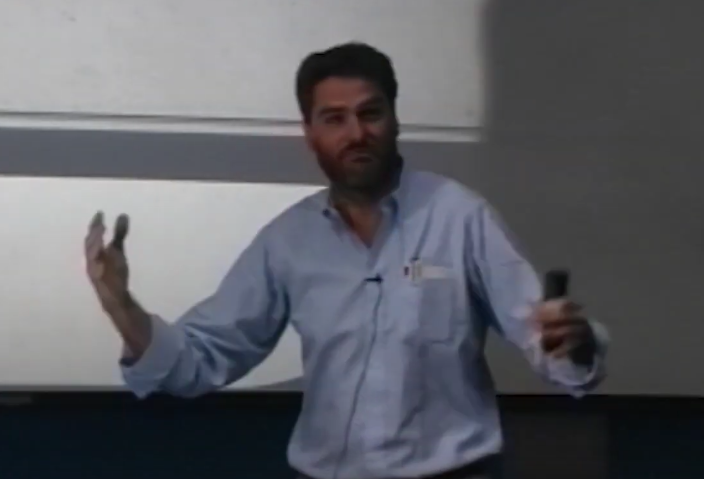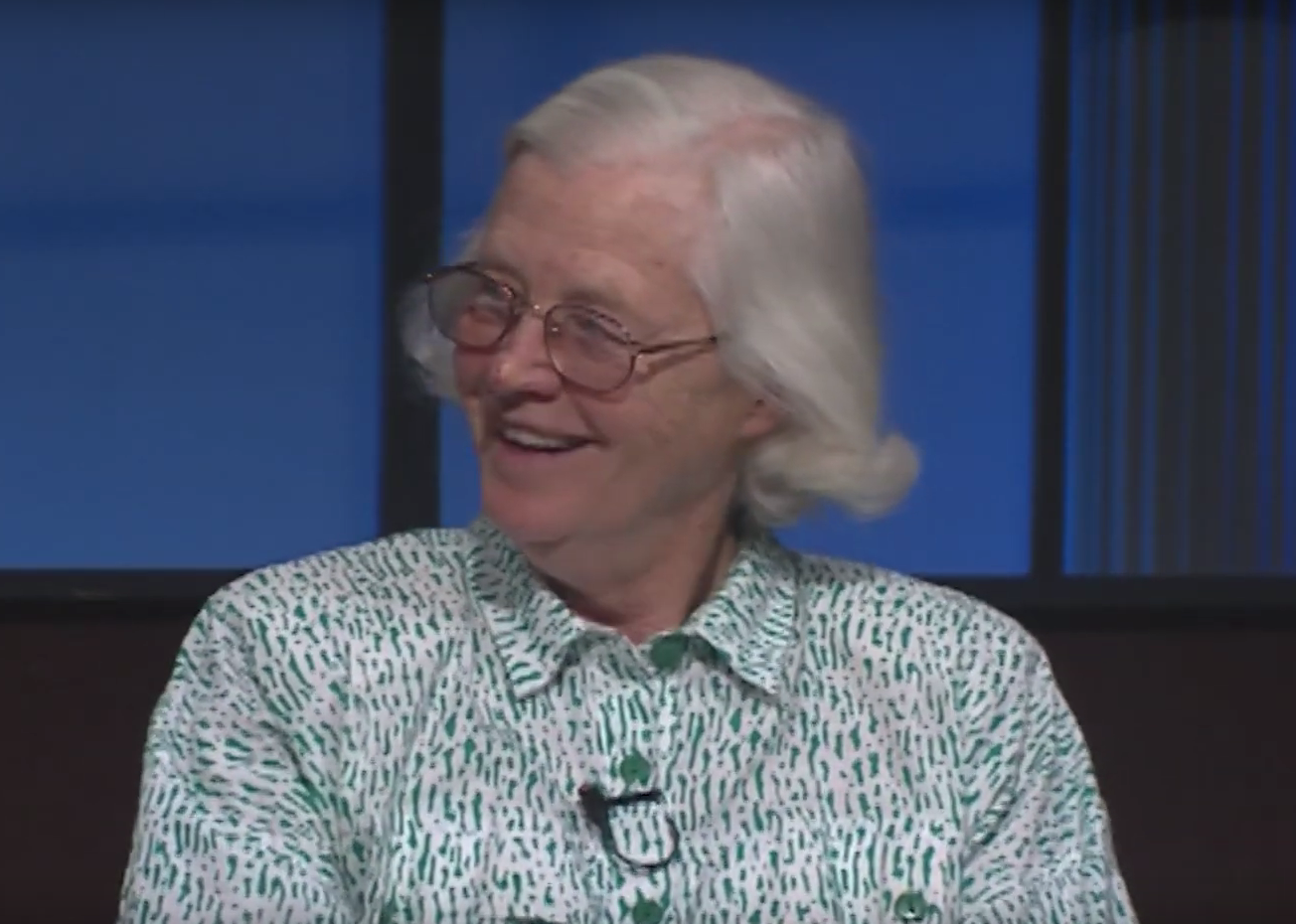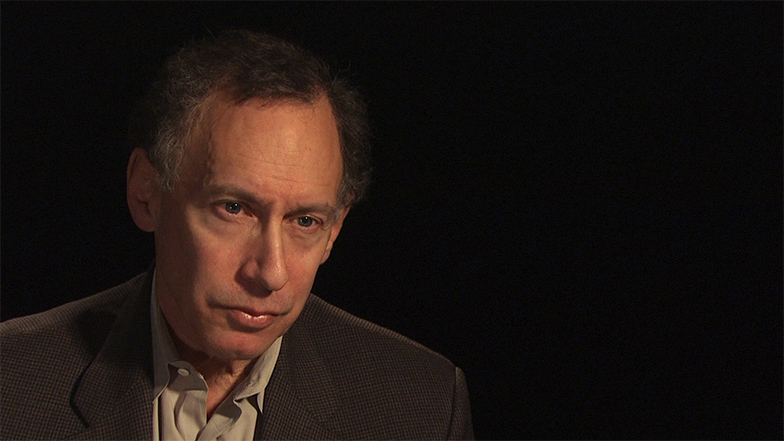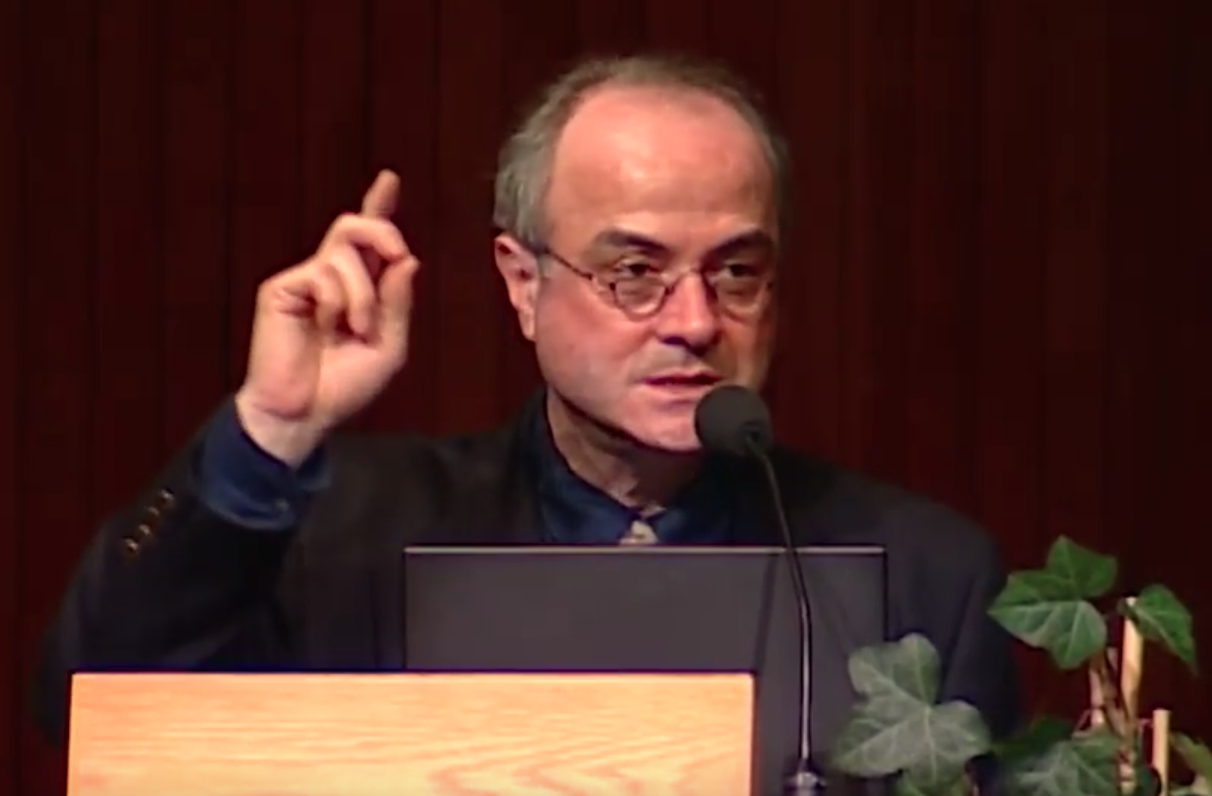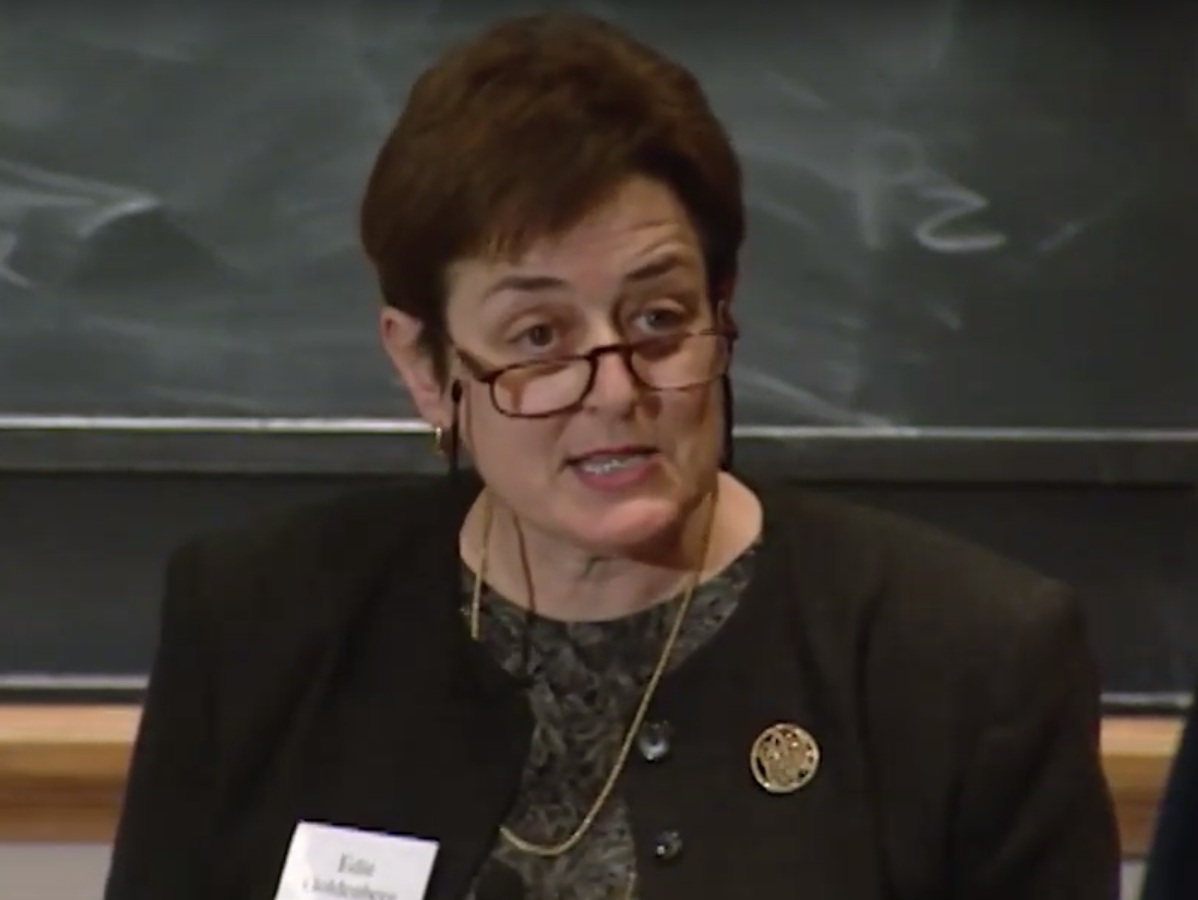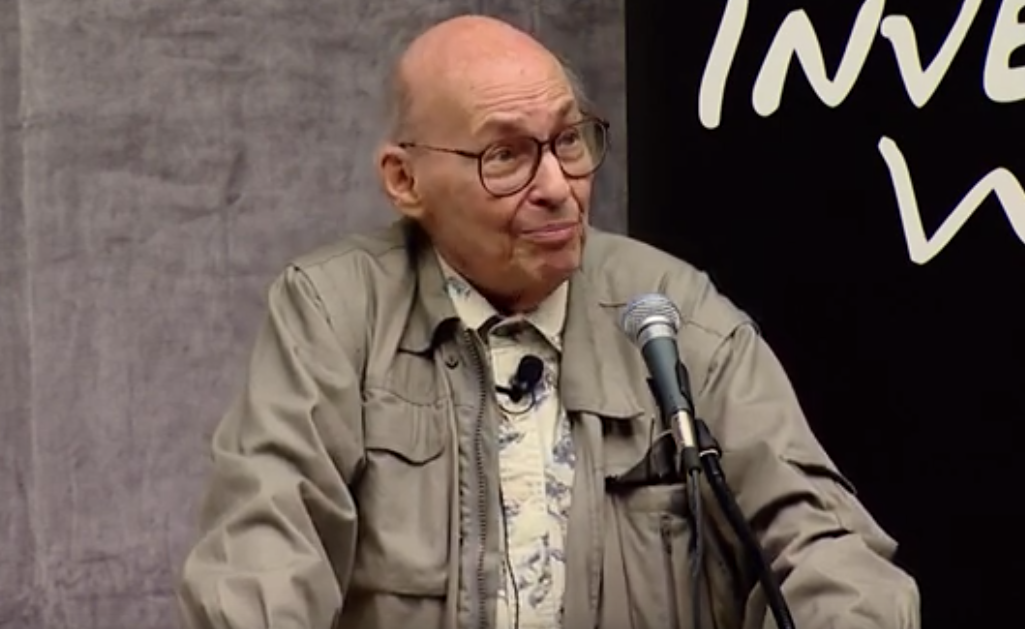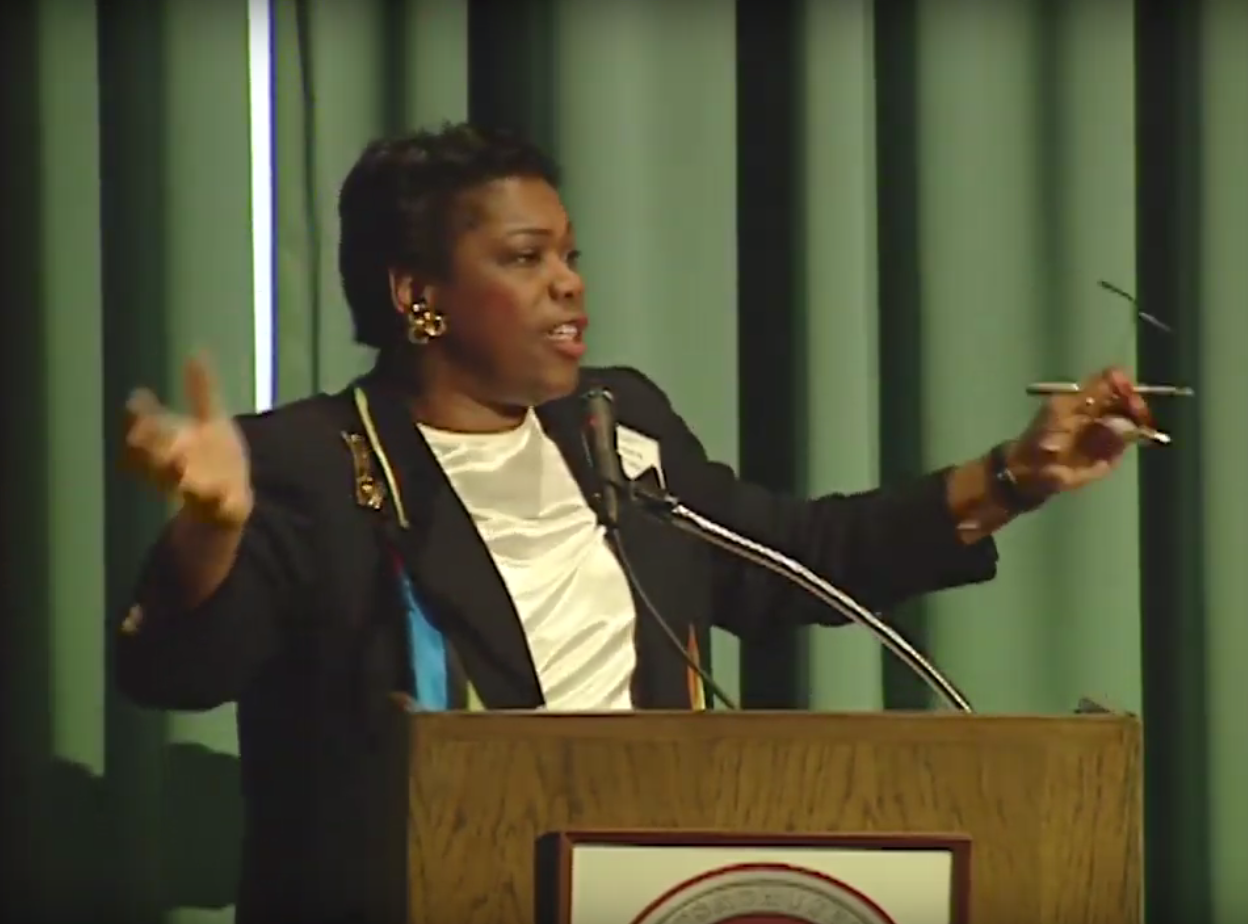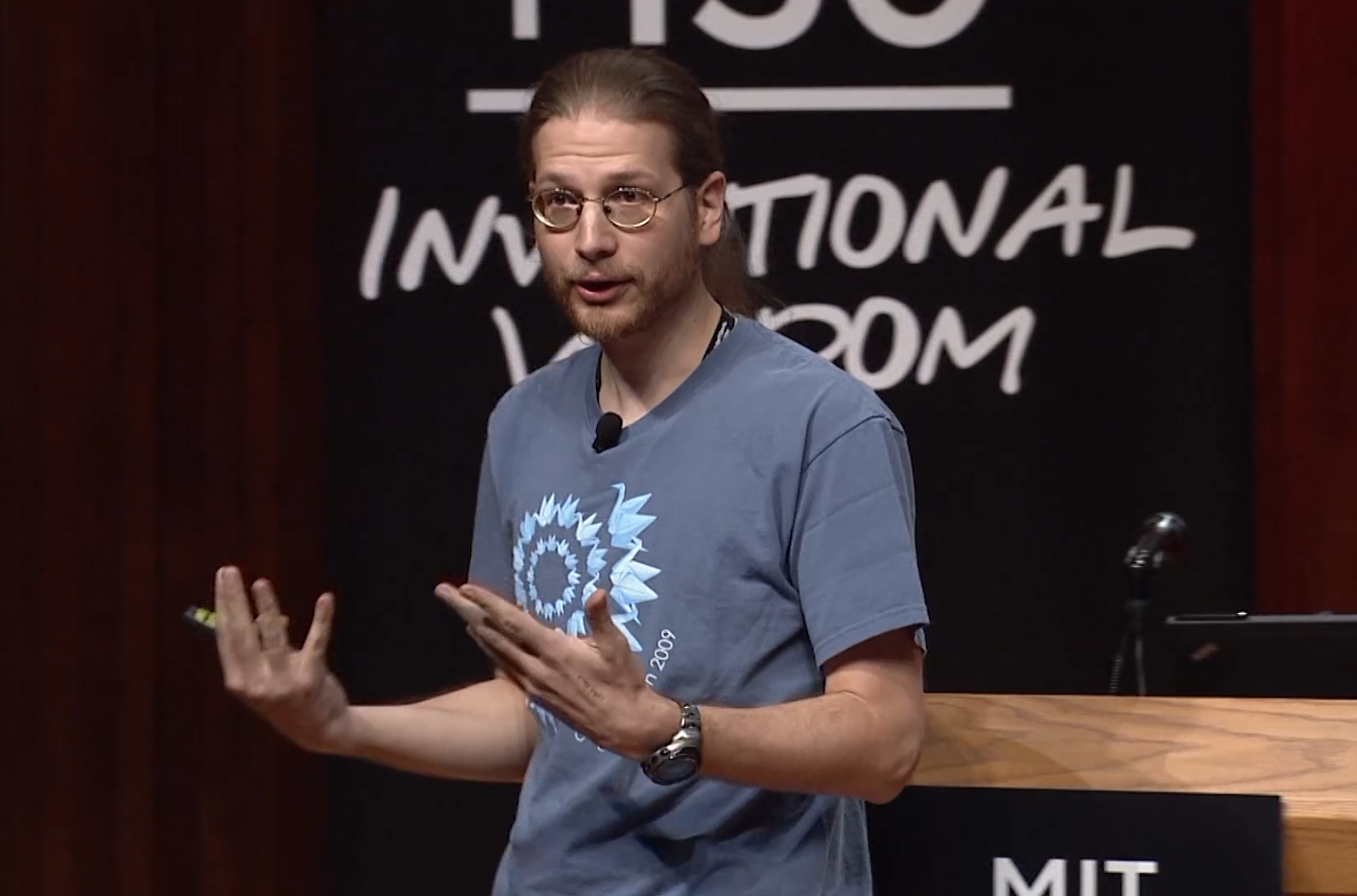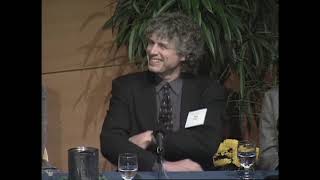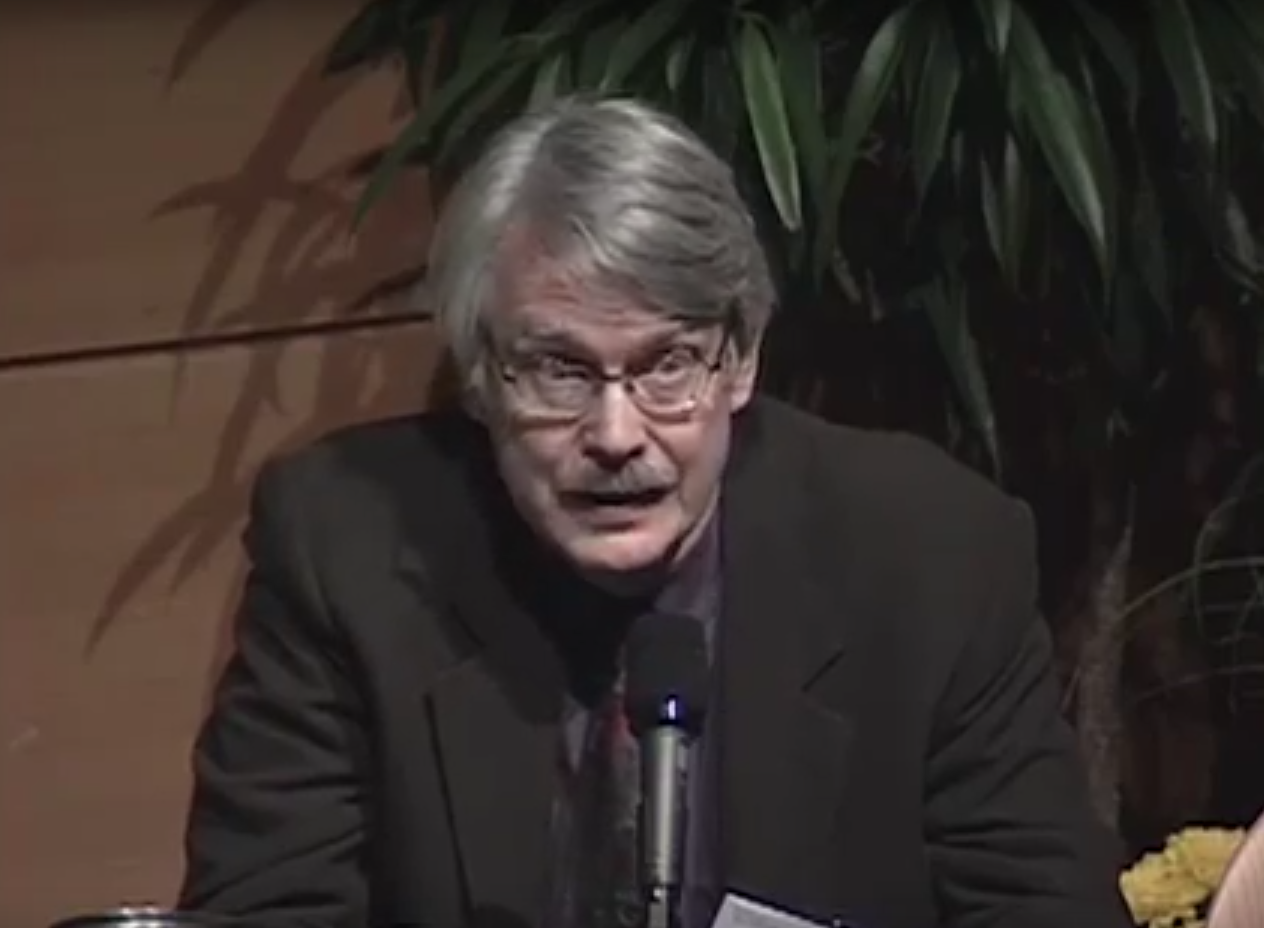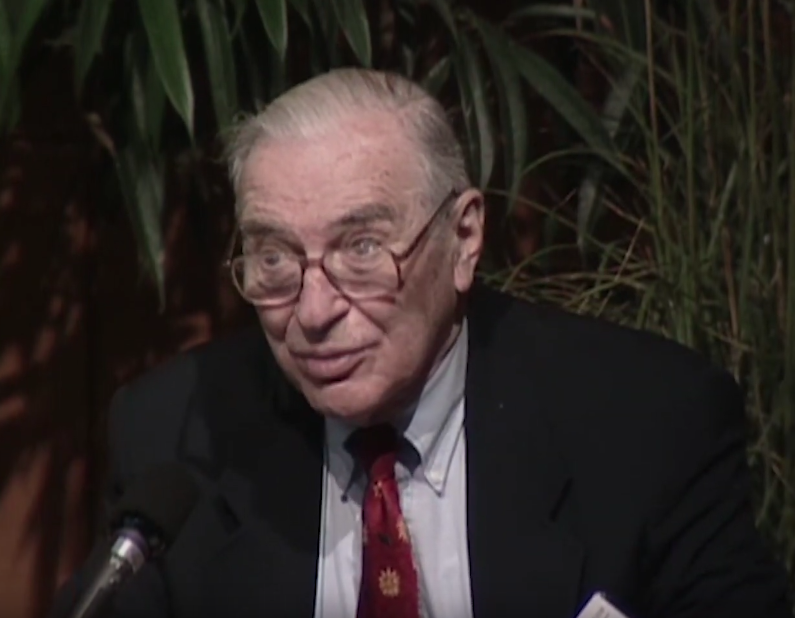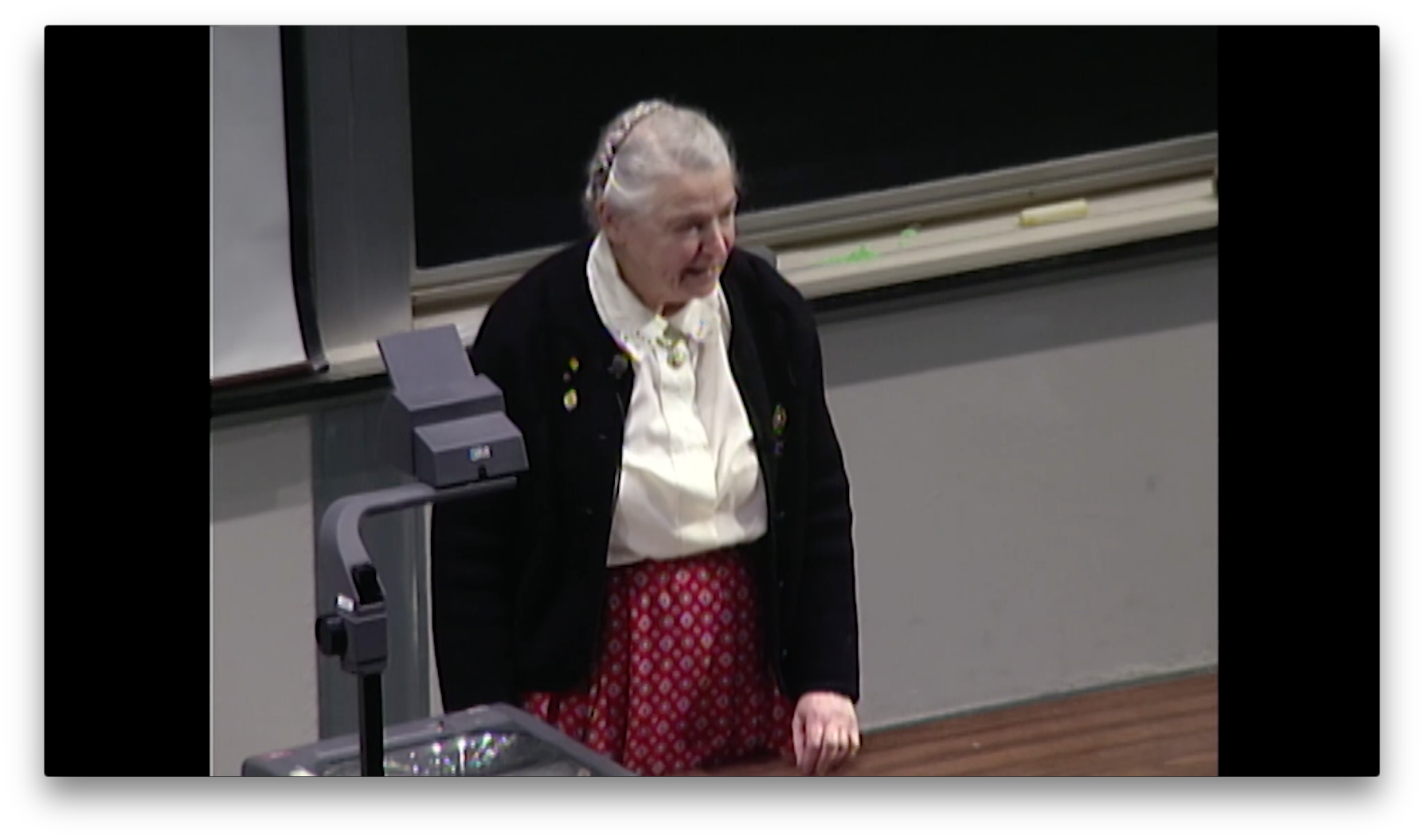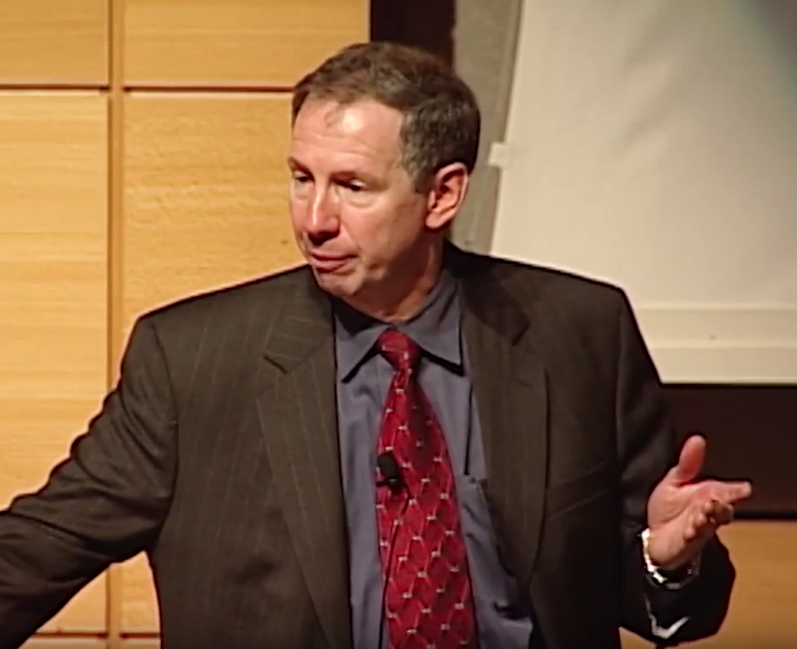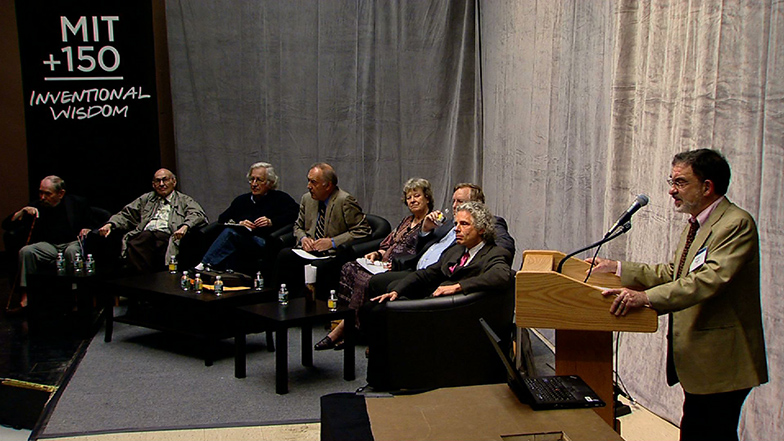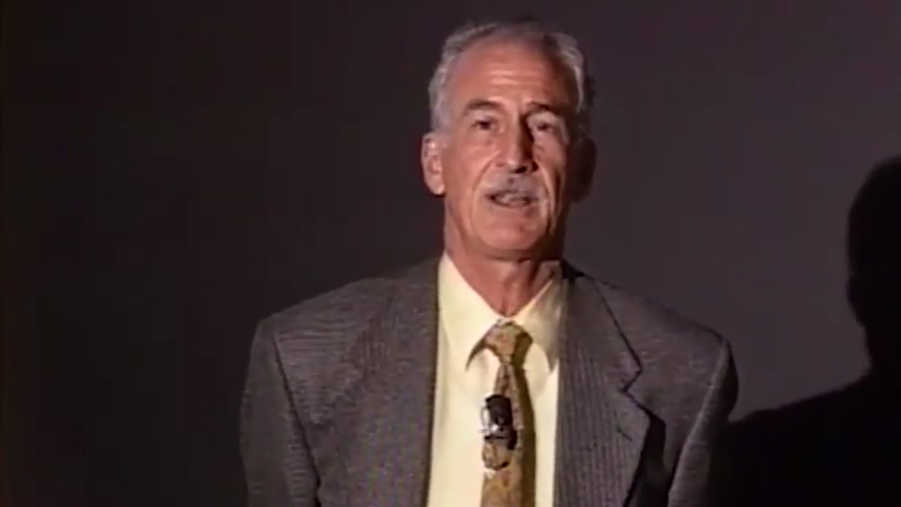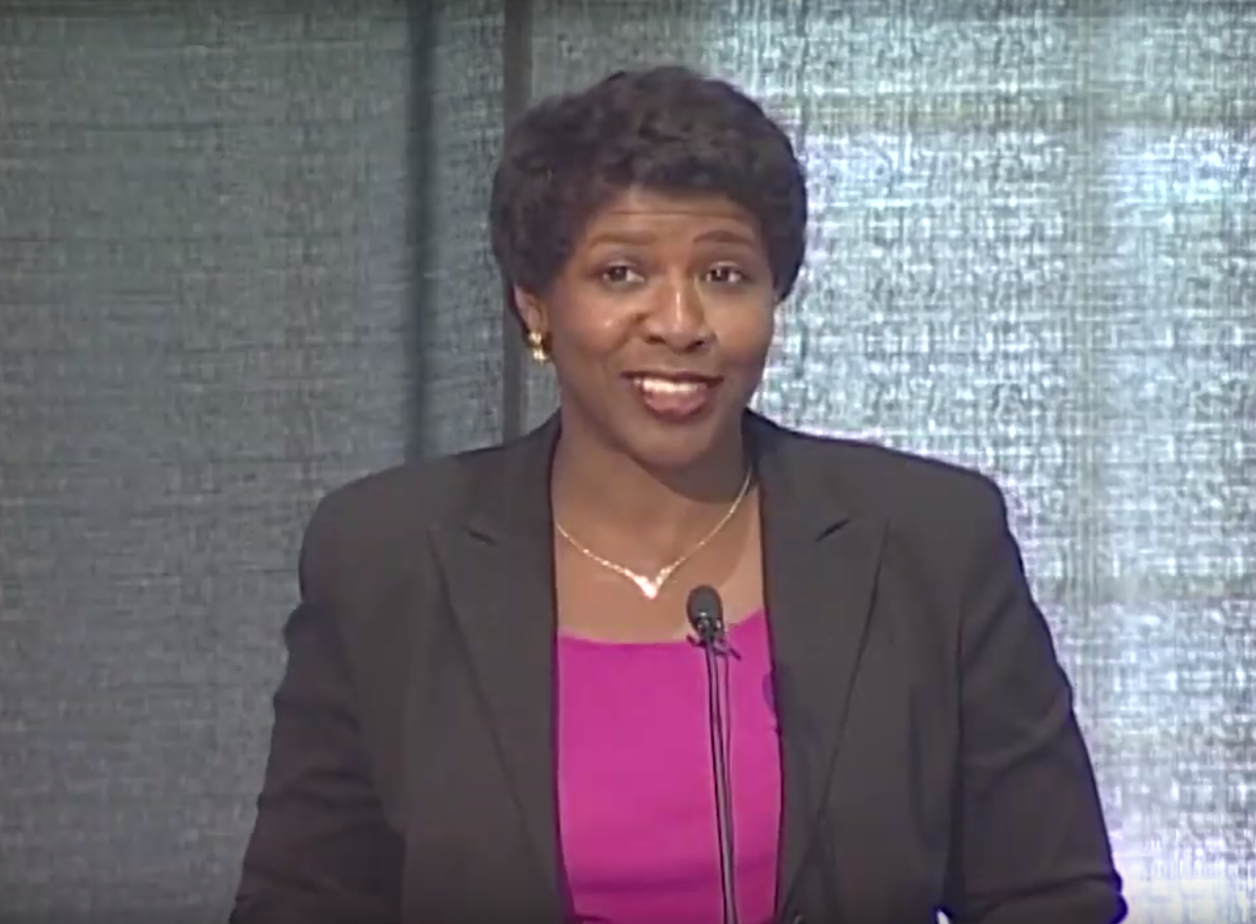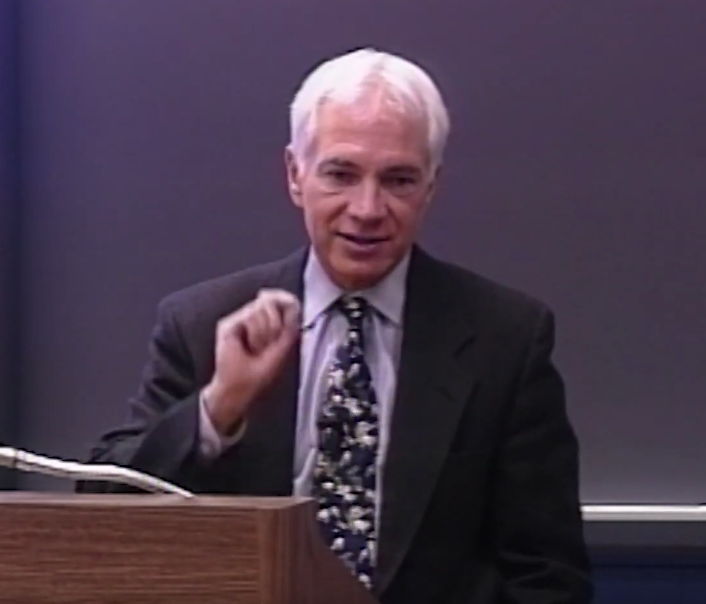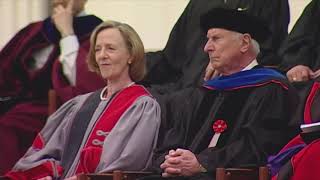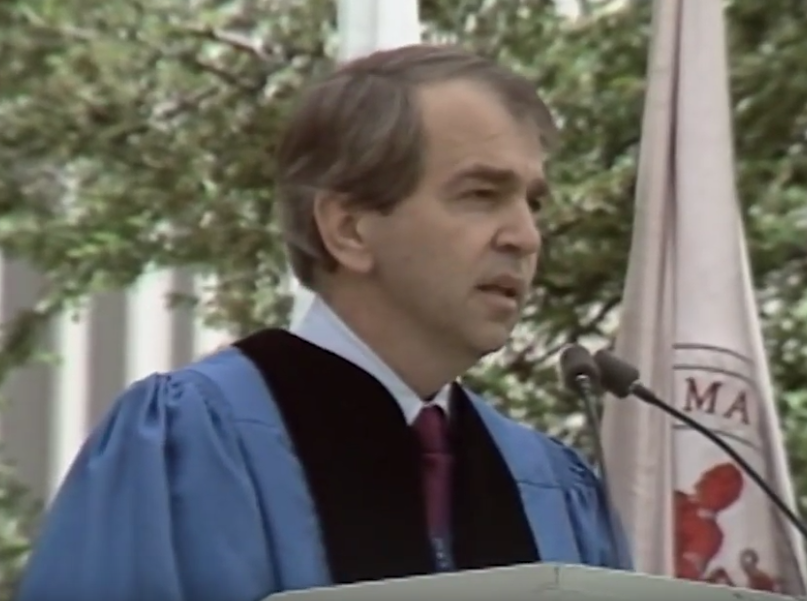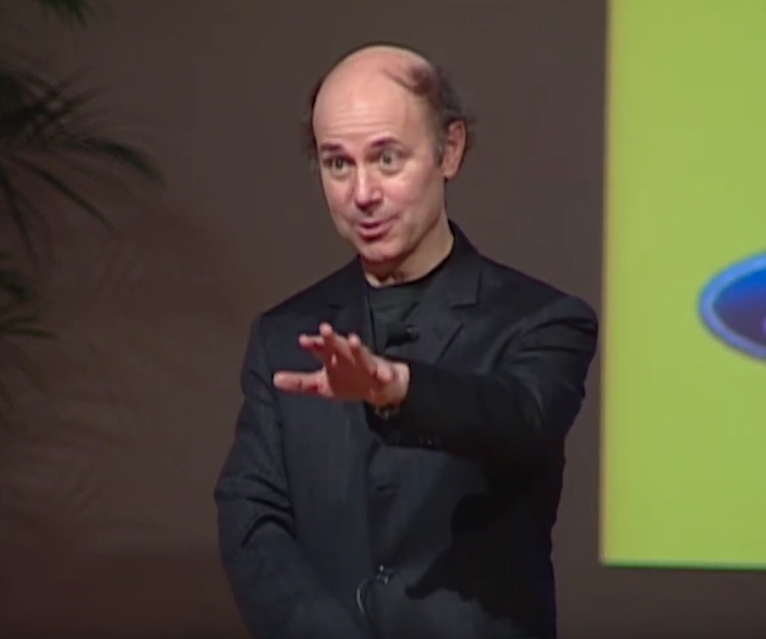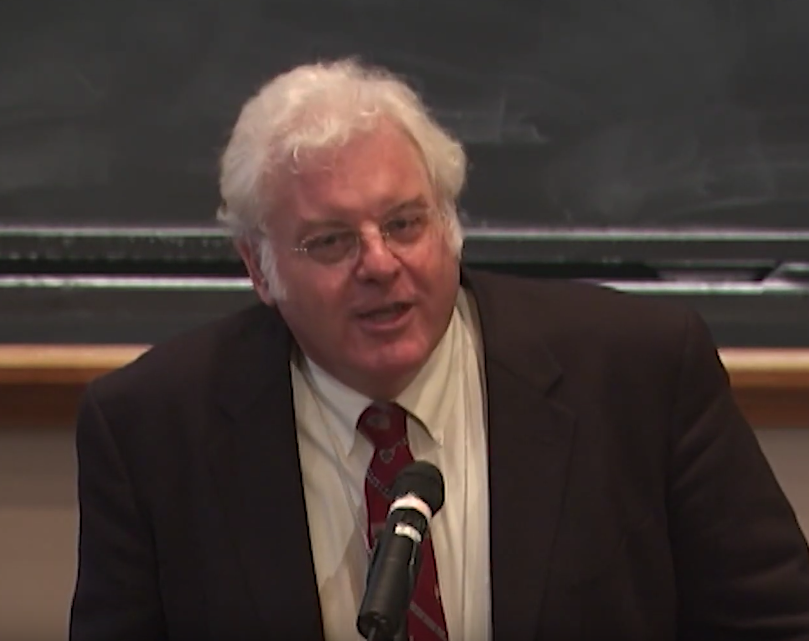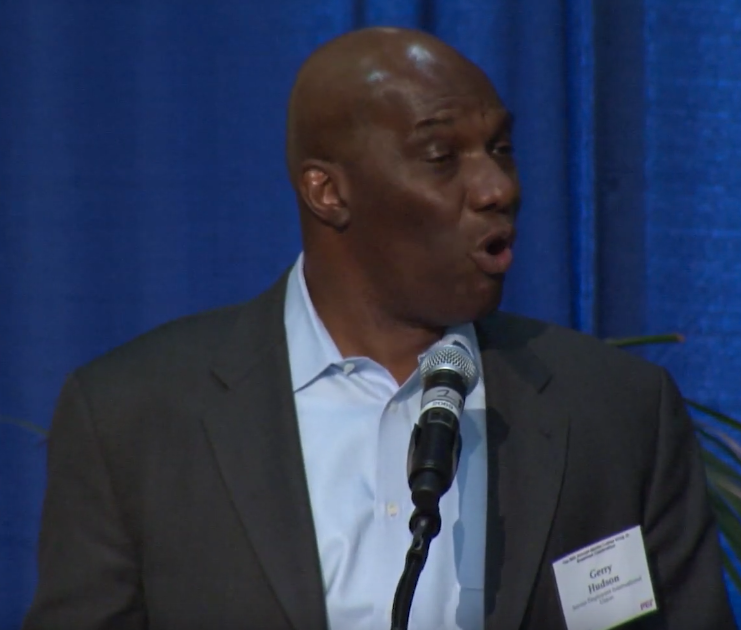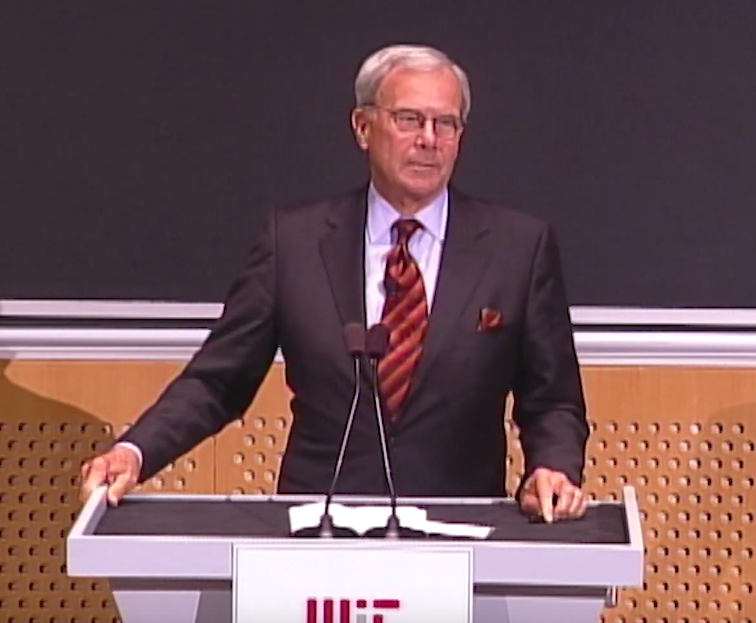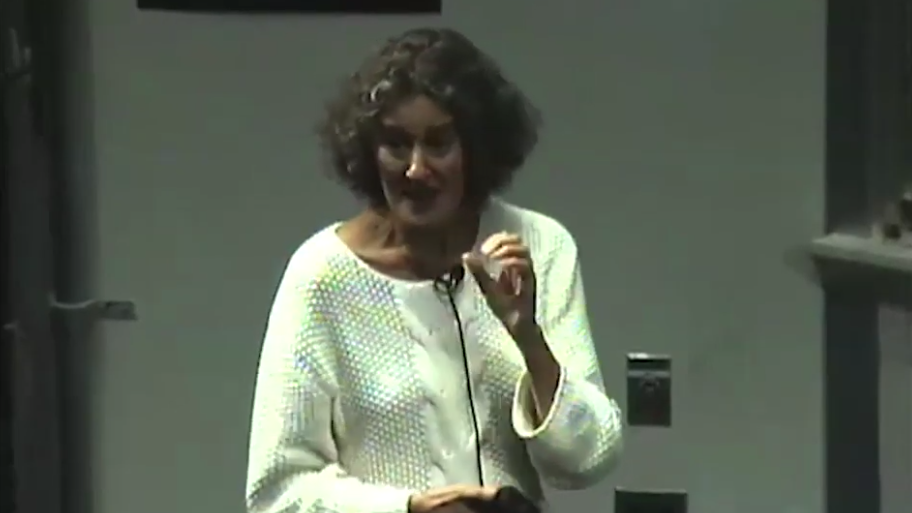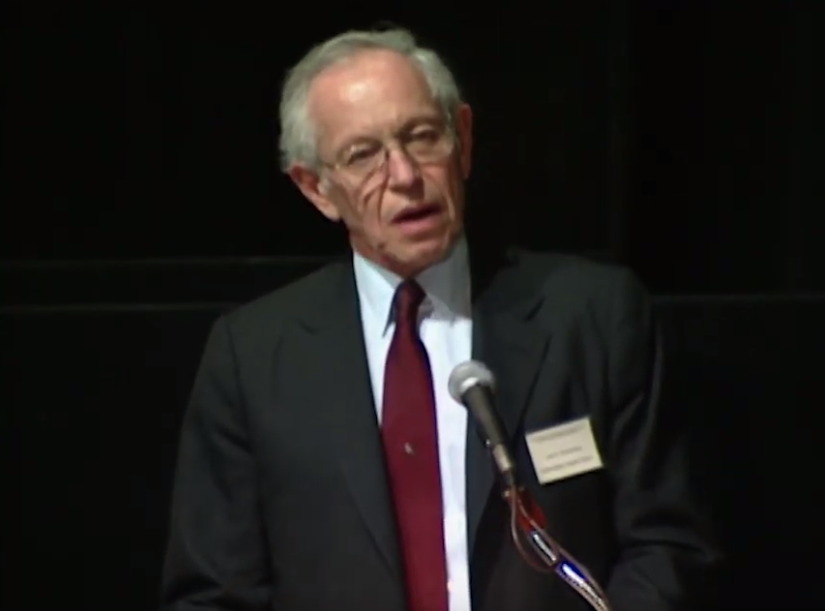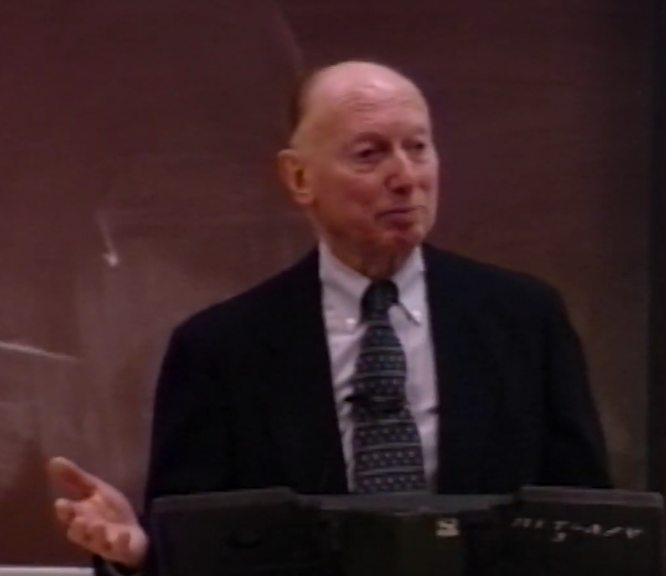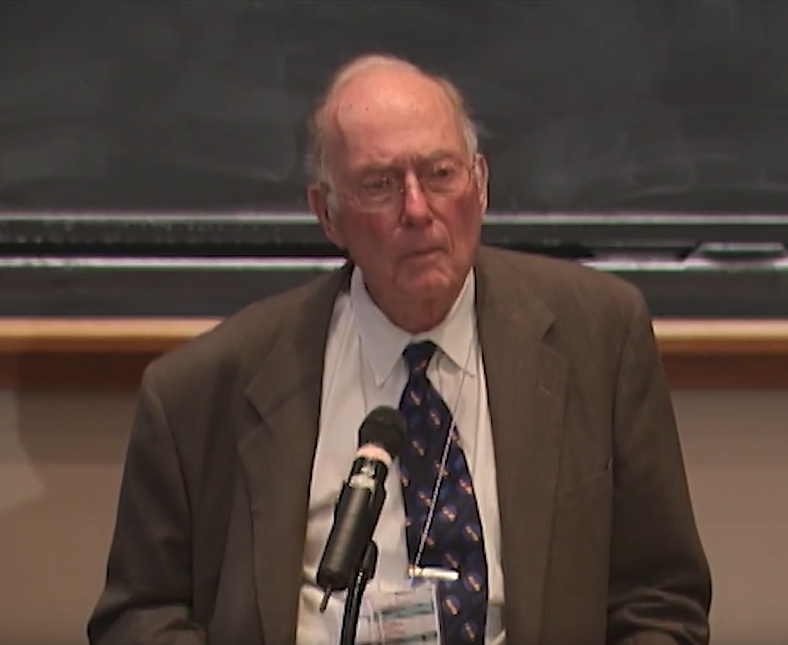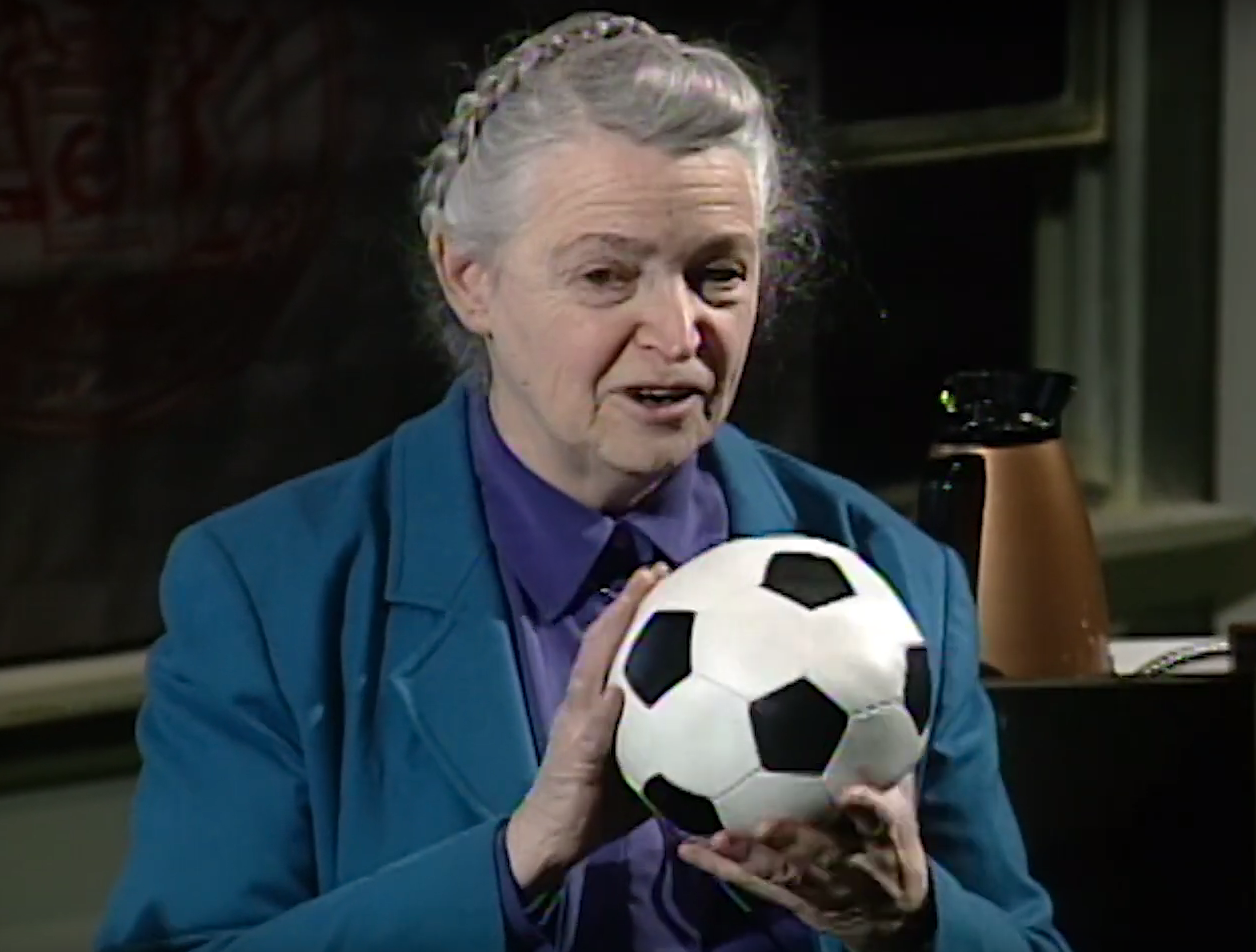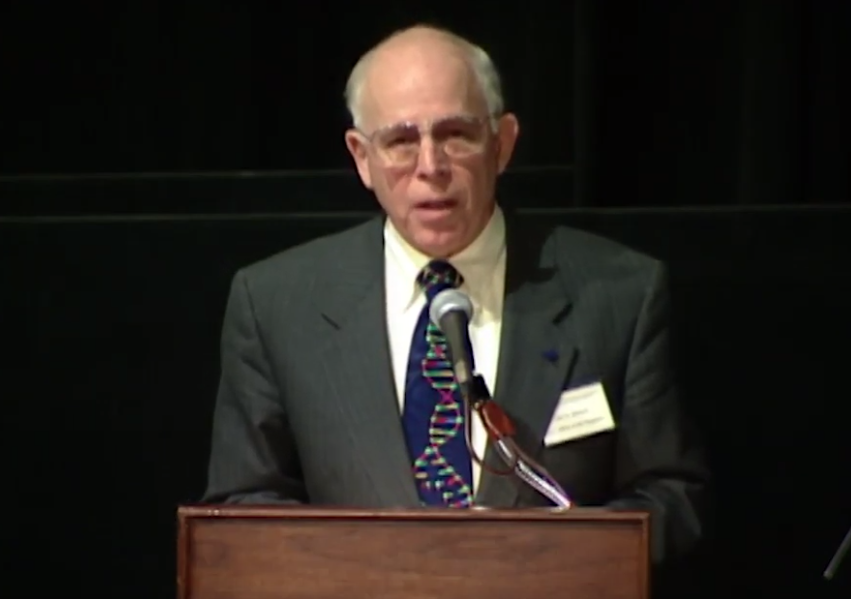Jerome I. Friedman
INTERVIEWER: To begin, at the time that you first became interested in physics, it seems as though at that moment in America there was a kind of a convergence about art, and science, and music, and ideas, that maybe is worth recalling today when things seem so specialized. Evoke that time a little bit, and how your interests were reflected in the things you were reading back as a child.
FRIEDMAN: Well you know, my father always had some interest in science. He was an immigrant. He had no formal education, but was self- taught, and he had an interest in science. My mother had a great interest in art, especially in music. And so I had influences from both sides. But when I was a young person, actually from the age of about six or so, I used to draw, paint and do such things. I was really very much enamored of such things, and I thought that was probably the direction I would go into for a career.
I went to Marshall High School on the west- side of Chicago. Marshall had a wonderful art course there. It was actually a group led by quite a good teacher, he was an artist himself, George Weisenberg. He established a curriculum there. You could go there and draw and paint for about two or three hours a day, and as a result of that, I didn't take very many courses in mathematics. I think I took one in algebra, one in geometry, and that was about it. I never took trigonometry or anything beyond that.
And so I was happily engaged in this art program, and I was doing reasonably well. I made a mural which was exhibited in Carson Pirie Scott for a year. It was a mural about Abraham Lincoln and his grocery store. You know, it was an image of him at the grocery store, and women with long skirts coming in to purchase something. And I also won a National Prize in wood blocks.
So I was doing quite well. In fact, when I graduated from high school I had a scholarship to the Museum School of the Art Institute of Chicago, which was quite a plum. However at the end of my third year, I went to the Museum of Science and Industry, which you probably know very well in the south side. A beautiful museum. I happened to come across a little book about this thick about relativity, written by Einstein. And it was supposedly a book that any person who just had algebra could understand. That was the idea.
So I got this book, and I said this is really interesting stuff. I had heard about all these various interesting issues having to do with special relativity. You know, the fact that a moving clock will slow down, and a meter stick will shrink. And I said, how can this be? I mean, how does this come about? I want to read and try to understand it. So during the summer, I spent the whole summer going through the book. I reproduced every equation in the book. And at the end of the summer, I said to myself, this is interesting but I still don't understand it, because there's one fundamental principle in the whole thing, which actually is a very deep principle. And that's why people didn't come up with relativity earlier.
I didn't quite understand that until many years later. And that had to do with the fact that light has the same speed in any moving reference system, no matter how fast it's going with respect to you. I could not understand how that could be the basis of such a theory. Of course, many years later after I studied physics, I could understand it. In fact, I taught the course a number of times at MIT. But I got so interested in the whole issue, that I had decided at that point that I wanted to go into it, and I'd like to try to learn more about it. And that's why, instead of taking my art scholarship, I went to the University of Chicago.
Fortunately I was good enough in my academic subjects to get a full scholarship. They gave full scholarships in those days, in fact, I never really paid any money for my entire education. And that was very fortunate because my parents had great financial difficulties, it was always sort of a hand to mouth existence. I grew up during the Depression, and I have many memories of all kinds of difficulties. So I went off to the university and that's how it all began. And of course -
INTERVIEWER: Can I just ask one question?
FRIEDMAN: Of course.
INTERVIEWER: So you show up at the University of Chicago. What year are we talking?
FRIEDMAN: This was 1947.
INTERVIEWER: Okay, so 1947. You show up to the University of Chicago where most of your training is in painting. And you'd taken algebra. And you somehow convinced them to give you a full scholarship to learn more about physics?
FRIEDMAN: Well actually, Chicago had a very interesting program in those days, it was the so-called Hutchins Program. Robert Maynard Hutchins, who was the president of the university at that time, had developed this curriculum of general education. And the idea was that you could come to Chicago and you could get an AB degree taking no courses if you passed the placement examinations in all these areas. Every student took placement exams, and depending how you did, you could have an education which lasted four years or zero years in the college. I took the placement examination, and I had to spend about two years in this general education. And to my total surprise, I actually had placed out of the physical sciences, even though I took very little. I did take a physics course in high school, but it was so bad that the only thing I can remember from it was that the teacher burned his sleeve on a Bunsen burner. And that was the only thing I remember from that physics course. But it was from the reading that I did, that I was able to pass that placement.
But I spent two years in this wonderful set of courses on western civilization, and we read everything. It was a great books course. And there were no textbooks, only syllabi, and original readings. And so you read everything. I read many, many books a year, and we would discuss the things we read. It was a wonderful education. It was two of the best years of my life, because I was exposed to so many different points of view. New ideas. Things I'd heard about and finally had the opportunity to study these things, and learn something about them. I just felt so fortunate.
The way it worked was that after you got your AB from this program, you entered the physics department, and it was called Graduate School. And the way they worked it there was that they would have a very accelerated, college physics curriculum. In fact, in the first year you would take two year's worth of courses. It was on a quarter system, so I took three courses, physics 105, 6 and 7. And they covered in one year what MIT in its physics curriculum at that time covered in two years. And then after that, you took more advanced physics, and then you took an examination called the qualifying exam. And if you passed the qualifying exam, you'd go off and take the advanced courses, which would really be the true graduate school.
So basically it was two years until you really got into what you call the standard graduate curriculum. And so it was very accelerated and the competition was very, very intensive. I didn't know anything.
INTERVIEWER: Weekly problem sets?
FRIEDMAN: Oh yes. In fact, in 105, 6 and 7, we had a test every Friday. The average grade on that test was 20 out of 100, to give you an idea of the difficulty. The course started out with something like 125 people, and I think 35 people finally finished at the end of the year. And these people did not flunk out, they just dropped out. They just couldn't take this sort of thing. I had one great advantage. See, I didn't know anything, so if I got a bad grade in a course, I'd say, what do you expect? I had no background, so I just kept on working at it. For example, I didn't know what a sine or a cosine was at that time. Of course I picked it up quickly, and I picked up calculus at the same time.
So I was able to sort of hang on by my fingernails at that point, and I got through it. And then as time went on, I sort of caught up with the rest of the class, and I got through all my examinations, and that's how it all developed.
INTERVIEWER: When you sort of shifted into the graduate program, where suddenly you weren't doing the mechanics and the sort of standard curriculum, but were actually beginning to glimpse the frontiers of physics, in the 1950's, what did that feel like? And what were you looking forward to studying?
FRIEDMAN: It was really exhilarating. The idea that I used to hear about all these things which were so mysterious, and to go to these lectures from Fermi. Fermi gave all kinds of courses. He would give lectures, and he was an extremely inspiring lecturer, and to hear it coming from him, that's why I actually went into particle physics, because that was what Fermi was studying. He made it seem so fascinating, that how could one not study particle physics? So I decided to go into particle physics basically from the point of view that Fermi, who was one of the greatest physicists of the twentieth century, found this an extremely exciting program. And it's where the future of understanding the basic laws would be. I said to myself, well, if it's good enough for Fermi, it's certainly good enough for me.
But I was really also extremely interested. And Chicago at that point had the highest energy accelerator in the world, it was called a 450 million electron volt synchrocyclotron. Fermi was one of these great physicists who was really both a theoretician and an experimentalist. He was probably the last one who could do both at a very, very professional level. He was doing some experiments having to do with the new discoveries in pion scattering from protons, they were finding some very strange effects, resonances and things of this nature. It was really exciting.
And of course, everybody who was anybody in the world of physics came to visit Fermi. I mean I remember as a student, this is after I started working in Fermi's group, and there was an interesting thing about how that happened that I'll tell you about it. I remember going to a lecture that the young Richard Feynman gave Fermi. Fermi thought Feynman was a very brilliant young man, anytime Feynman came into the area, Fermi would ask him to come and lecture, and Feynman would come in and lecture. And Fermi would invite all the students in his group, and the postdocs, and we'd all hear it, other various people came to the lectures.
Feynman was a really colorful character, because when he came to lecture to Fermi, he had this business of having various personas. And he would have sort of what they call the Brooklyn pool shark persona when he came to lecture. He would talk about you know, the particle goes this way and it goes that way, and he would speak in this sort of Brooklynese accent. And it was really quite remarkable. But he was an extremely brilliant man. I remember Pauli coming, and Heisenberg, all the greats came to see Fermi, and that was really also extremely exciting and inspirational.
INTERVIEWER: How did you see the big debates in physics that were going on at that time, playing out with the characters who were actually a part of it? Pauli, Feynman, Fermi?
FRIEDMAN: Well, the thing is the renormalization issue was at that point very mysterious. It was a way of getting rid of infinities in calculations. And the thing about it was that it worked. It was one of these things that people perhaps used as a kind of one might call an artifice, or maybe a very deep perception, depending upon one's point of view. But it worked. And for example QED, quantum electro dynamics, was the best theory in physics with such renormalization issues, so that was something that was always sort of lurking at the edges.
The issue of waves and particles by that time was fundamentally resolved. The idea was that we don't really understand quantum mechanics from a classical point of view in the terms of human logic, we don't really understand it. And I remember one of my professors telling me the following: He said, you will never really understand quantum mechanics, you'll just get used to it. And the point about it is quantum mechanics is extremely successful, it seems to explain everything that we observe. And of course, QED is the extension of quantum mechanics, the field theory. And it was extremely successful.
So the issue of philosophical questions was not one that was pushed very much in that milieu, because Fermi was really very much of a pragmatist. He really wanted to use what you could use to try to understand nature, and predict nature. And he did it. He was probably one of the best people at calculating things in the following sense; he could really distill problems down to very basic principles. I mean, he was one of the few people who could lecture and take a very complicated theory, and maybe in three lines, make you think you understand why the answer is correct, within 15 percent. You know, obviously when you want to get it to be exactly correct, it's got to be a long calculation, but he could get basic principles and demonstrate that you could get an approximate answer, with a few lines of calculations.
INTERVIEWER: So, maybe the debate was muted to a certain extent. But you were seeing a kind of contrast between the experimenter's focus on pragmatic reality. And what you could predict and show. And the broad theory of what was absolute truth. Did you make a choice between one of those two -
FRIEDMAN: Well, you see, in science, you never get absolute truth. That's the first thing you have to understand. You see, what you do is you get models, you get ways of defining things around you, and those things are good until you have the next experiment. In other words, nothing is absolute unless it is able to make predictions that can be verified by observation. And so, in a certain sense maybe philosophers talk about absolute truth, but scientists do not. I think one has to be humble about these things, because if you look at the history of science, so many things that were thought to be absolutely correct were shown to be either approximations or totally incorrect. And so, I think it's always what I call getting asymptotically to reality, rather than being able to annunciate absolute truth. And I think that was really the attitude of Fermi. And Feynman certainly had that attitude, and most practicing scientists.
So there are some basic principles like the conservation of energy, the conservation of momentum, but they've been verified in every possible situation. Now if somebody were able to demonstrate in a physical situation that these things were not conserved, then we'd have to think about them. What is causing this exception? Is it a breakdown of the rule, or is there some other influence entering into the equation? So I think that's a very important point about science in general.
INTERVIEWER: Do you remember the first experiment that you were part of, that scratched that sort of edge of reality, and forced people to maybe think in a different way? Or maybe confirmed a result that suggested that the theory was absolutely on the right track?
FRIEDMAN: Yes, probably the first time that this happened to me was after I got my PhD. And it was after I stayed for one year at Chicago. Unfortunately Fermi had passed away a couple of years before I finished my thesis, so when I finished my thesis, another physicist named Valentine Telegdi took over Fermi's laboratory. And the idea there was when you got a PhD, you'd stay for an extra year until you'd get a job. They were very nice to the students. And then you would participate in the programs.
Now at that point, there were some interesting developments in particle physics. A certain particle was decaying in two different ways, and these two different ways had different parities. There is something called parity in quantum mechanics, and it has to do with the fact of what happens when you change x to minus x in the equations. The idea was that parity is always conserved in every reaction. It's like saying that if you look at something in a mirror, the laws of physics that you see in the mirror are the same as originally. The idea, for example, imagine you have a law, and you saw the mirror image and it didn't behave in the same way, this would be equivalent to saying parity is not conserved.
It turned out that two young physicists, TD Lee and CN Yang had proposed that maybe in this particular reaction, parity was not being conserved in the decays. You see, the decays are basically the results of the so-called weak interaction, whereas parity had been observed to be not violated in the electromagnetic and the strong interaction. There were not sufficient tests in the weak interaction to know whether parity really was conserved. And everybody from the old school said this is ridiculous. It's obvious that parity has to be conserved. Valentine Telegdi said look, this is sufficiently interesting that we should test it. Will you join me? And I said, sure. It sounds like a fascinating thing to explore.
Most of the people in our laboratory would have nothing to do with it. In fact, I remember giving a seminar about our method, and I gave a description of what we were going to do to try to test the conservation parity. And I remember a grand old gentleman in physics, Gregor Wentzel, came up to me after my talk - he was a wonderful physicist and a wonderful human being - and he said to me, Jerry, that was a nice talk, but you know you're not going to find anything. The assumption was the parity was so obviously preserved that this test was basically a waste of time.
Nonetheless, we did the experiment, and we were one of the first three groups that showed that parity was not conserved in weak interactions. Now that ended up being a very important thing, because then it more or less determined what the interaction terms of the weak interaction were. And these terms played a very important role in what the final structure of the so-called electro weak interaction is.
INTERVIEWER: So, the experiment was, you used the accelerator to create the decay?
FRIEDMAN: Yes.
INTERVIEWER: And then measure so far as you can on this tiny, tiny scale the masses of these decayed particles. Add them up and see if they constitute parity.
FRIEDMAN: Actually, parity always results in a lack of symmetry in some decay process, because you can only get this lack of symmetry if parity were violated. So what you do is you actually look at the decay products, and measure their angular distribution and get a backward-forward asymmetry, and that's how one finds it. This is the first time that it occurred in my career, that I got involved in something which was thought to be totally useless and impossible to overthrow. It turned out that parity was not conserved, and this told me that one has to have an open mind, and one has to be able to take risks.
Valentine Telegdi also gave a talk, and people criticized him. He said look, this is such an important thing, I want to give three months of my life to test it. I felt the same way. And that turns out to be an important part of science. Don't think that everything is understood that well.
This was considered one of the things that really was so obvious to be true, that it couldn't be otherwise.
INTERVIEWER: When you looked at the images of the decays that were produced in cloud chamber-like -
FRIEDMAN: It was always actually nuclear emulsion. And really what it was, it was the so- called pi mu decay. And what you do is you take pions and you slow them down, and you actually stop them in the emulsion, and they decay into a muon. You see a muon and a neutrino, you don't actually see the neutrino, then the muon decays. And you look at its decay products. The muon decays into an electron plus two neutrinos, a neutrino and an anti-neutrino. You look at the direction of the electron with respect to the direction of the muon, and that's what it is. These emulsions were about this big, just maybe a few centimeters across. You look at them in a very high powered microscope, and you can actually see the decay occurring.
INTERVIEWER: These mysterious trails.
FRIEDMAN: Yes. And then you just measure it, the numbers which go forward versus backward. And that's what was done.
INTERVIEWER: There's something beautiful about those images, isn't there?
FRIEDMAN: Oh yes, they're really wonderful. I mean, when you think that these are such minuscule things entering and decaying. And that you can actually see their trails, it's really quite something. When I say minuscule, I'm talking about the size of a pion which is probably about 10 to the minus 13 centimeters. And then of course the electron is even much smaller, and the muon is much smaller. So it's fascinating.
INTERVIEWER: Is it impulsive? Did you feel clever that you were tricking nature into revealing herself in this way? Did you feel as though you were probing into some window that was entering into a space -
FRIEDMAN: Well, I never thought that you could trick nature in a certain sense. I mean, nature is so extensive and powerful that, you're just lucky that nature allows you to get some glimpses. So that's more the idea that you could actually see something like that occurring, it's extremely satisfying.
INTERVIEWER: Two questions. Just to go back, the passing of Enrico Fermi must have been a really profound event in your life. It happened in the middle of your education.
FRIEDMAN: Yes, absolutely. In the early part of 1954, I took a course from him in the spring. He was giving a course in quantum mechanics, and though I was a graduate student doing research in the group, if Fermi talks about quantum mechanics, I want to go and hear it. I just audited the course. I already had my courses in quantum mechanics. He gave us a wonderful course. And he looked extremely robust, he looked in great shape. He went to Europe that summer, and apparently got a stomach cancer. It developed very rapidly during that period, it was almost like a fulminating cancer. I saw him again in September. I was walking down the corridor and I saw Fermi in the distance. I could barely recognize him at a certain distance, I knew it was Fermi, but he looked so different. He had become emaciated. I waved to him and he waved to me, and he went into his office.
The next day he went to the hospital for exploratory surgery, and I never saw him again. They opened him up, and they saw it was an inoperable cancer, and they sent him home to die, essentially. I never felt that I could go to his home and visit him. I probably should have, but I never felt I was at the right status to do that.
But to give you an idea what kind of man he was, here's a story told to me by Chandrasekhar, who was a great theoretical astrophysicist at Chicago. He and Herb Anderson, who was somebody who had worked with Fermi for many, many years, went to see Fermi at home. After he had been sent home to die. They walked in, and they were sort of speechless. They didn't know what to say. What do you say to a man who has been given a death sentence, essentially? And Fermi sensed this, and he said to Chandrasekhar, he said, Chandra, tell me, when I die will I come back as an elephant? And everybody broke out laughing, everybody in the room, Fermi, Herb Anderson and Chandrasekhar. And the ice was broken, and they had a very good conversation.
The idea that even it that state, he realized the discomfort of his two visitors, and he went out of this way to try to put them at ease -- that was the kind of man he was. He was a very kind and considerate man. And I was very fortunate to be able to work with him for a few years.
INTERVIEWER: What a great community of thinkers and physicists and inquirers all journeying to this sort of deeper understanding of what was going on in the universe. And at that moment in a sense, the torch was being passed from the Fermi generation to your generation. And there was much work to do. How did you get from Chicago to MIT?
FRIEDMAN: Okay. That's an interesting story. After we finished this parity experiment, I started looking for a job. I was working in nuclear motions, and it was sort of a dying technique. I was having a hard time getting a job, as a matter of fact, and this physicist Val Telegdi, who I had become very friendly with as a result of working with him, said look, I'm going to get you a job. He called up Robert Hofstader at Stanford University and said, you know, I have somebody who could work with you. And got me a job immediately. So I went to Stanford and spent three years there. I learned counting techniques, using a different technique for studying these things, instead of using visual techniques you use electronic techniques. The idea is that you send particles, and you hit a target, and then you count the particles coming out electronically. And what's good about that is that you can, by various techniques, identify the particle that's emitted.
And you're able to get much more data because basically, the fundamental clock time for counting is very, very short. So that was a very good period. I learned electron scattering, which would play an important role in my life later. I met Henry Kendall, who was also working in the group, who would later became my close friend and colleague, and I learned about electron scattering.
So, how did I come to MIT? What happened was that Martin Deutsch, who was a member of the MIT physics department, came to visit Stanford, and he came to see Henry. Henry had been Martin's graduate student at MIT. So Henry said, you come with me and we'll both meet Martin. So I met Martin Deutsch. Martin Deutsch was a very prominent physicist, he had just discovered Positronium which is a very important system. And so Martin said to Henry and myself, he said look, we're looking for young people, we're going to be building an accelerator called the Cambridge Electron Accelerator at Harvard. Why don't you apply for jobs? So Henry and I both applied for jobs, and lo and behold, we were accepted. And I came in 1960 to MIT, and Henry spent one more year at Stanford and came in '61.
So I came. This is also interesting. Ned Frank was the head of the department, he was a grand old man. And he sent me around, he wanted me to meet people. There was a little booklet that was prepared each year about the physics department. And he said, you're going to prepare this book, and you're going to go and meet everybody in the department, get their pictures and statements. So I did that. I met everybody in the department, and I decided to work with a guy by the name of Dave Ritson, who was working in particle physics. So I started working with Dave, and then, the first summer that I was here, Dave went off to Europe, to work in Italy I think it was. And while he was in Italy he got a job offer from Stanford. So he went to Stanford and I inherited Dave's group. So I not only came to MIT, but I also had a small research group. I had three graduate students that worked under Dave, and I had to make sure their theses were finished properly, so I took over that. I hired some new graduate students, who started doing some work, and then Henry joined me the next year, and we had this nice group at MIT.
INTERVIEWER: Wow.
FRIEDMAN: And that's how it all came about.
INTERVIEWER: So at the moment that you suddenly had these resources to begin your own inquiries, the standard model of the atom was in some state of enormous flux. I mean, certainly popularly, people understood electrons, protons, and neutrons. But there was this sub-structure that was emerging theoretically, that needed experimental confirmation.
FRIEDMAN: No, well it was somewhat more complicated than that. First of all, when I first came to MIT, like as I said the electromagnetic interaction was understood and QED had been developed. The strong interaction was totally not understood, it was just sort of a black box. And the weak interaction was not understood, because when anybody tried doing various calculations, it would give infinities which could not be removed by renormalization. So, there was only one interaction that was understood. And the thing that was interesting was that it was a period of great discovery, and many different particles were discovered very rapidly.
One of the reasons for this was the development of the bubble chamber, which was much better than nuclear emulsion. One could actually see particles come in, and see their decays, and measure everything, and actually reconstruct the decay, and find the existence of new particles. And there were so many particles that by about 1966 or so, 1965, there were more than 60 different particles that had been discovered. Names like Rho, Pi, K, various things like that, and there were various so-called baryonic states. And the question is, what do you do with it? It's like zoology, are you just going to name them, give their properties and you have a list?
It turned out that Murray Gell-Mann who was also a PhD from MIT and who had worked at Chicago when I was a student answered this. He was a student of Weisskopf. And when he finished, he went to Chicago to work with Fermi. Fermi also thought that he was one of the bright young men of particle physics. Gell-Mann and Neyman an Israeli physicist, developed an organizational technique which classified these various particles and families based upon spin and parity. And it turned out that a number of the particles that had been discovered fit in beautifully. There were some other particles that had not been discovered, and so they led to people looking for these particles, and they were finally discovered.
INTERVIEWER: It's the eight fold way?
FRIEDMAN: The eight fold way.
INTERVIEWER: And so basically a model was produced by Gell-Mann and Neyman that had these slots. And all of a sudden there were slots open, and you had something to look for.
FRIEDMAN: That's right. And this was based upon the mathematical group SU3. And that's what was beautiful, it was a mathematical model, and it was an extremely successful classification scheme. There was tremendous satisfaction that somehow we now were able to not only put these particles in their various places in the scheme, but you could predict existence of other particles which had not been yet found.
Then the question came up, why does this scheme work so well? And Gell-Mann and independently George Zweig came up with the idea that maybe there was a triplet, of three types of particles, which could be used to actually construct these particles. It turned out that Zweig called them aces, and Gell-Mann called them quarks from a quotation from Finnigan's Wake which is also an interesting issue. There was a tendency those days to give particles and things like that whimsical names, and quarks were whimsical enough.
But these quarks had some strange properties. First of all, they were point-like. They also had fractional charge.
INTERVIEWER: A difficult concept.
FRIEDMAN: Very different. For example, there were three quarks that were proposed. There was the up quark, the down quark, and the strange quark. The up quark had a charge plus 2/3, the down quark had minus 1/3, and the strange quark had minus 1/3. And for example, a proton would be made up of two up quarks and a down quark. And a neutron would be made of two down quarks and an up quark, so you can sort of see the symmetry there.
Physicists in general said that this is a very strange idea, the idea that we have fractionally charged particles in nature, is pretty hard to accept. And then of course everybody said, well if quarks exist, then we should find them. And then there were searches made in accelerators, the cosmic rays, in mud, in meteorites, looking for quarks. And not a quark was found. So the idea at that point was that quarks are basically a great heuristic device, but of not much reality. There was a small group of people who definitely believed in quarks, and they kept on calculating the properties of particles as made up of quarks. But nobody paid very much attention to them. In fact George Zweig who was one of the believers, and kept on working on the theoretical aspects of quarks and how you can make particles, because of this, never got an academic job. He was regarded as a crackpot.
So this was sort of the atmosphere. And it turned out that in 1966, the Stanford Linear Accelerator was brought into operation. It was a two mile long linear accelerator for accelerating electrons. It had a total energy of 20 billion electron volts and high- intensity. Henry and I and Dick Taylor from SLAC and others decided to work on this. Henry and I from MIT said look, this looks so fascinating, we should get involved in it, and we were working at the CEA. We just said, it's much better to try to get to higher energies where you can actually do more exploration.
INTERVIEWER: So the Cambridge accelerator was sort of eclipsed by the Stanford accelerator.
FRIEDMAN: Yes. That's right, in energy and power. This is interesting, because how do two young professors who have teaching responsibilities have the audacity to want to work 3,000 miles away in those days? So, we went to see our department head Bill Buckner, who was a great fellow, he was a wonderful man, Bill. We told him what the problem was. He said, listen, I have a solution. It's not a problem. And we said, what is it? And he said, Henry, you and Jerry will be one professor as far as teaching. Each of you will get a salary. So Henry and I would teach the same course. I would be in California for two weeks and he would teach, then he would be in California for two weeks and I would teach. And that's the way it worked for a number of years.
This is one of the remarkable things about MIT. If you have a good idea and you let the people who have that authority know about it, very often they can find a way to, and they will enable you to do it. And we were the first group I think in the country that was able to establish a physics group at a very distant laboratory. And we finally established a group there. We hired some postdocs, we got students working there, and we were able to participate in the program at SLAC.
So we started out measuring the so-called elastic scattering, and we didn't find anything very surprising. It was just a continuation of the lower energy measurements, so that wasn't of continuing interest. And then we decided to look at the so-called inelastic scattering. That is where the electron comes and actually smashes the proton and produces other particles -- really breaks the proton up and the proton forms other particles.
INTERVIEWER: That required very high energy.
FRIEDMAN: Yes, actually you can do inelastic scattering even at lower energies, but the more inelastic you can get, we figured, the better. It requires a certain threshold to do that, and once you're beyond that threshold any energy beyond that will do it. And so we started examining this. And the other interesting thing is, and this is has to do with very much in the direction of what I talked about earlier. When Henry and I started looking at the inelastic scattering, people said to us, well intentioned physicists, well established physicists said, it's a waste of time. You're not going to learn anything by smashing protons with electrons. If you want to learn about protons, do proton-proton scattering, not electron-proton. And they really had missed the point .
The point is the following; that the electron basically is a component of the electron microscope. And you could use a machine, like SLAC as a very, very powerful electron microscope. And by doing that, you can actually see what's inside the proton. If you analyze the data correctly. In fact, Feynman had the following analogy, he said, well if you do proton-proton scattering, it's like smashing two Swiss watches against one other and seeing all the parts come out, and trying to reconstruct the parts. He said, however if you look with electrons, basically what you are probing is what's inside the proton.
INTERVIEWER: The simple electron smashing the complex proton.
FRIEDMAN: Exactly. Because the electron, has no internal structure. As far as we know, it's an extremely small system, very point-like. And I can say a few words about that. So we were told that was a waste of time.
INTERVIEWER: Heard that before.
FRIEDMAN: Yes, we heard that before. So it was interesting, because in the elastic work, not only did SLAC work with MIT, but also Caltech worked with MIT. So it was a Caltech, MIT, SLAC collaboration to do elastic scattering. When we started doing inelastic scattering, Caltech dropped out to do something more interesting. That'll give you sort of the flavor of this. So the other thing is, what happened was that we went to theorists. We asked the theorist, could you give us some predictions about what you might expect if we smashed protons with electrons? And no theorists would touch it. You know, it's too complicated. Too complicated. Of course, nobody knew what was inside the proton.
And so, I decided at that time that I was going to make what I called a very crude theoretical model. So I took the current point of view, and this is sort of a technical point, but what I did was I had the electron come in. And when the electron scatters, it emits a photon. But a photon is so-called off the mass shell. It's not a real photon, It's a virtual photon.
So I said, if it's a photon, it's photo production. And therefore that's what I basically calculated using photo production, which had been measured. Then I put in some corrections due to the fact that this photon is off the mass shell, and then you can make a prediction. This kind of prediction would be maybe off by a factor of five, at worst a factor of 10.
INTERVIEWER: Very much in the footsteps of how Fermi would do it.
FRIEDMAN: Exactly. That was probably it. So we used this as sort of a measuring tool to see how the scattering would compare to this sort of model. And this model of course had no internal structure. It basically took the proton as being sort of an amorphous distribution of charge, and basically this would be in a certain sense the scale of the scattering. So we started doing the scattering, and a short time after, we got 10 times what the prediction was. I said, okay, well you know, we said it could be off 10 times. After all, this is a very crude model. We continued with higher energy and bigger angles. We got 100 times bigger, then 1,000 times bigger, then 10,000 times bigger, and we knew we were on to something.
Then I made a distribution of the scattering versus the momentum transfer, and it showed that whatever was in the proton was point-like. And what does that mean? We don't necessarily mean that the thing is an actual point, but it is so small that we cannot establish what the size is, we can only have an upper limit of the size. And so, that's the beginning of seeing that the protons had constituents inside them.
Now Henry did something interesting. There was a young postdoc at SLAC by the name of Bjorken who also was from MIT, an undergraduate I think. And Bjorken had developed something called scaling which was a kind of technical thing, saying that the scattering was defined by the ratio of the kinematic variables, instead of two kinematic variables independently operating. What you do is you make a ratio, a unit-less ratio, and then you try to represent the scattering with it. And it turned out that that also was found to be true. So Henry showed that the scaling was working. So the fact was that it was point-like and the scaling was working, and it actually turns out that the scaling also implied point-like, so we had two different methods of showing point-like behavior.
Then within a year or so, we did a set of experiments which showed what the spin was. You see, you have to show three things if you want to show that there are quarks inside the proton. One is that they're point-like objects. Two, the spins are spin one half. And three, they have fractional charges. So you must show those three things, and the fractional charges have to be the right fractional charges. So we established first point-like objects, then we measured the spin, which we could do by the so-called ratio of backward and forward scattering. We found the spin was 1/2, and then we made a measurement of what the fractional charge was. Now, there was only one problem with our measurement. Namely, there were two variables, which had to be determined. One is the charges, and one is the so-called momentum carried by the quarks.
And it turned out that we were able to show that the quark model was being confirmed in terms of fractional charges if the quarks carried half the momentum of the proton. And what do I mean by half the momentum? It means, for example, if I see a proton moving very fast, and it has a total momentum of one, all the quarks would carry 0.5. The sum of all the quarks would carry 0.5. So the question is what would carry the rest? There was something else that's required if you have quarks, and that is there have to be forces holding them together. And these forces have to have exchange particles. And they have to be, most likely, neutral exchange particles, without charge, because the charge is being carried by the quarks.
Therefore the idea was that these were called gluons, the particles which glued the quarks together in a proton, and they would have to carry half the momentum. But we had no way of proving it. Now, then there was an experiment at CERN.
INTERVIEWER: The accelerator in Europe.
FRIEDMAN: Yes-- using neutrinos in a bubble chamber. They demonstrated that the quarks only carried half the momentum. So once they did that, it was over. The quarks were unmistakably there, nobody could claim that the quarks were only a figment of mathematical representation. And another question is, why don't you see free quarks? And this is where another MIT faculty member played a role. And that's Frank Wilczek, who was a graduate student, who worked with David Gross. And there was another graduate student we worked with, Sidney Coleman at Harvard. They came up with the so-called quantum chromodynamics, which had a new kind of force between quarks. The thing about that force which is so interesting, is that it behaved in a way which was different from any other force we knew of at the time.
If you take two quarks and you try to pull them apart, the force will actually increase, rather than decrease. If you have, for example electromagnetic interactions, forces decrease by 1/r squared. Gravitation goes down by 1/r squared. But with two quarks, or a quark and an antiquark, you pull them apart, the force actually increases. So it's like a spring. So if you really wanted to free a quark, you've got to put in an infinite amount of energy, which of course is not possible. So they came up with this theory called quantum chromodynamics, and it showed why quarks could not be found as free quarks, they could only be found as composite systems. And that was really quite interesting, because it was a new type of thing. And though confinement has never been proved exactly mathematically, it turns out that every test that has been made in quantum chromodynamics has shown quantum chromodynamics to work.
And a few years ago, Wilczek, Gross and Politzer got the Nobel Prize for this very, very important work. So that became the so-called strong interaction, strong force, and that's an integral part of the standard model.
INTERVIEWER: So you went into this whole thing, and the weak force and the strong force were black boxes.
FRIEDMAN: Yes.
INTERVIEWER: By the end of it, you suddenly had a picture of how this whole -
FRIEDMAN: Yes. By about 1972 basically the standard model was - Actually it wasn't quite in place until I think '73, because that was a point at which Weinberg and Salam, and with the earlier work of Glashow, showed that there was an electroweak unification. So by '73, the standard model was in place, because you had electroweak unification, the strong force that was developed by Wilczek, Gross, and Politzer. You had quarks, which basically were the fundamental things which had the forces on them, and then the so-called leptons had been discovered by that time.
INTERVIEWER: That's a lot for a waste of time.
FRIEDMAN: No, actually by '74, there was one lepton that was found in '74. It was known to be there, but it was still missing. '74 was the last lepton that was discovered, a charged lepton. And then there was one neutrino that was discovered in the '90s, the so-called Tau neutrino, but everybody expected it to be there at that point.
INTERVIEWER: All of the stories that you tell about these discoveries and these great experiments, involved collaboration. How is that collaboration a feature of your experience at MIT and in science generally. How important is that?
FRIEDMAN: Oh, collaboration is absolutely essential. For example, particle physics is a group effort. And in a certain sense three of us were awarded the Nobel Prize, I think it's a prize for everybody in the group in a certain sense. The rules and regulations of giving out Nobel Prizes state that the upper limit is three, but in a certain sense, I always think of it as being a prize for the experiment. I've been very fortunate having had outstanding students and outstanding colleagues. I'm very grateful to them for their contributions to the work that I've been associated with, and they've also been very good friends.
Collaboration with theorists is very important. And I've found that to be a very helpful thing in the past, and it will continue as such. And theory actually is going through some interesting developments, it's going in two directions. One is at the very, very highest energy scale. A tentative, for example, one is String Theory or something called M Theory. It is in this theory a ten to the 19th GEV, which is the energy in which there are quantum effects in gravity, that the two become part of the same theory. And that is a very interesting development. However, it doesn't intersect the experiment. It's much too high in energy, because for example, this is a tenth to the 19th GEV and the work that's going to be going on at the large hadron collider, which is going to start this year, is a tenth to the third GEV.
INTERVIEWER: At the super string level, you'd have a difficult time getting a zoning ordinance to build such a -
FRIEDMAN: Yes. Look, The problem there is that for example, if you went to 10 to the 13th GEV--
INTERVIEWER: You're gonna rattle some windows.
FRIEDMAN: That it would be an accelerator with current technology which would basically go around the entire solar system. I don't want to say that we'll never get to that energy, because I hate to say never, but if I had to bet, I would probably not bet very much money on it.
INTERVIEWER: Is it true then all physicists dream of a long-distance phone call from Sweden?
FRIEDMAN: Well, I think it's a wonderful thing to happen. But I don't think that people think that much about it in the following sense. I think it's the work that really gets them excited. And if they get a long-distance call from Sweden, it's really a wonderful extra benefit, as one would say, it's the frosting on the cake. But what really motivates I think most physicists is trying to understand nature. And what I've found in my own experience, that my greatest pleasure really comes from understanding something I didn't understand, seeing something that is actually new with the idea that maybe our group is the first group in the history of civilization that has ever seen this. You know, in a certain sense, it's a very enjoyable thought that somehow you've been given the privilege to see something that has never been seen before.
And of course, Stockholm is absolutely a fantastic experience. I would never give back the prize, but it wasn't really what motivated me.
INTERVIEWER: And were you surprised when you got the call?
FRIEDMAN: Yes. Because it was so many years after the discovery, that I didn't think that we would ever get a prize. And it was quite interesting, because in about 1976, Henry and I went to a conference in Wisconsin, and some Swedish physicist came to see me, and also Henry independently. He claimed he was preparing a course on the history of physics, and he wanted to find out about this experiment. But what was very strange is he really wanted know who did what in the experiment, he really wanted to have a real explanation of what role every person played in the experiment. Henry and I got together and we compared notes, and we said, my goodness, this sounds like somebody from one of the Swedish committees. That really are working for the Nobel Committee, and they're doing some investigation.
So that year in October, we listened very carefully to the radio, perhaps expecting a phone call, and nothing came. And we said to ourselves, well it's quite clear they thought about us and they decided that this was not appropriate. So I never thought about it very much. In fact, it was interesting, the night before I was informed, I was at a meeting in Fort Worth, Texas for the so-called SSC project. The Super Collider, which was still being constructed at that time. And we were talking about who was likely to get it, and nobody ever mentioned us. So it was quite clear that the expectation was very, very low that we would get it.
And it was really funny because between 5:00 and 5:30 in the morning, I got a call from my wife when I was in Fort Worth. And at that point, my elderly mother was living with us, and she wasn't in great health. So Tania had the foresight to say, the first thing she said was, Jerry, this is not bad news. And then she proceeded to tell me that I had won the Nobel Prize, along with Henry and Dick Taylor. And I couldn't believe it. I thought I was still sleeping, and this was some sort of malevolent dream that was going to be just a disappointment or something. I just couldn't believe it. And I hung up, and then the telephone kept ringing. It was one call after another, and I couldn't stop. CBS called, and some people called for radio interviews at that time, real time radio interviews, and things like that. So after about a half an hour of this, I said I can't do this any longer, so I told the telephone operator to take all messages.
I went to get dressed to go down and have some breakfast, and of course I really had to get home. And I go downstairs, walk out of the elevator, and somebody greets me and says you're going to have a press conference in 15 minutes.
So I walk in and there's a big room and many chairs, and many people are already sitting there, and lights are all on me.
INTERVIEWER: You haven't even had breakfast yet.
FRIEDMAN: I didn't even have breakfast yet. So I had this press conference. And I did one good thing, I got an extra 50 million dollars for the SSC that day. In the press conference, I happened to mention the fact that the DOE was withholding 50 million dollars, and they released it the next day. So then I made arrangements to travel back, and I get on this airplane and I'm reading my magazine, flying back. And then the pilot mentions, congratulations Professor Friedman on your Nobel Prize, and the stewardess comes up and gives me a bottle of champagne.
This is the sort of thing that is unbelievable. It really is unbelievable. That it happened to me is something that I could never have envisioned. Especially when I think of the time when I was growing up and making little drawings and things like that, it was just beyond belief.
INTERVIEWER: In 1991, MIT made you an Institute Professor.
FRIEDMAN: Yes.
INTERVIEWER: How important was that?
FRIEDMAN: Well, it was very important. The fact that MIT gave me this kind of recognition gave me a tremendous sense of satisfaction. And of course, there are so many people who deserve such recognition, and obviously there are only 12 places for Institute Professors. Maybe 13. I don't know exactly. I felt very privileged to have it, because there are many, many, very, very worthwhile things that have been done here, and things of great significance. And I felt extremely grateful that I was recognized.
INTERVIEWER: How have the students changed in the time you've been here? In terms of their preparation, their outlook, their priorities, their sense of values?
FRIEDMAN: When I first came here, the students tended to be somewhat more nerdy than they were for many years. We've gone through sort of phases. When I first came, the nerd index was very high in terms of the selection process. These were very focused students, very much driven by what they were interested in. Then we went through a period of getting so-called broader students, equally good students, just a different slice. And then we went through a period, when made a better balance in going back to more nerdy students, but still having a large number of sort of broader students with broad interests. But they've always been incredible. The MIT students are incredibly bright and productive.
I think Dick Feynman was probably a representative of the kind of nerdy students we had in the past. Dick Feynman was an absolute genius, he published papers before he got his bachelor's degree. But from what I understand, he didn't do well in any course he wasn't interested in. But in physics, you couldn't find a better student. In mathematics, you couldn't find a better student.
INTERVIEWER: Why did you take such a leadership role in encouragement of minorities to be part of the student body, and to be members of the faculty at MIT? Why was that important?
FRIEDMAN: Well, because, first of all, we need all the talent we can get. And minorities have as much talent as any other group, and they should be given the opportunity to exploit it. And I think it's also a question of fairness. Nobody who has the talent to do something should be deprived of the opportunity to do it. I don't care what their background is, what their ethnicity, what skin color, what religion. It makes no difference. People should have the opportunity to exploit their abilities. And that's why, it's as simple as that.
INTERVIEWER: How did that play out? Was it a tough fight?
FRIEDMAN: No. Look at-- In some sense, one doesn't try to fight with people. I think one tries to do things which basically try to advance this particular point of view. And for example, one thing that happened when I was head of the department, which I have a tremendous satisfaction about, some of the minority graduate students came to see me, and they had a great idea. And the idea was to try to invite minority undergraduates who are finishing, to some kind of conference, to inform them about the opportunities of graduate school. For example, most minorities didn't even know that if you can get into a graduate school, your education is paid for. That sort of thing was not well known in the minority community, in terms of undergraduates. And so, this seemed like such a great idea.
INTERVIEWER: What period are we talking about? What year?
FRIEDMAN: This is probably in 1984-5, sort of in that period. Shirley Jackson was part of the group. Cynthia McIntyre. Fouad Mohammed was part of the group. And so I said, this is a great idea, I got some money together, and we had our first conference, we invited students from all over the country to come. We had something like 60 students. We had the minority graduate students be mentors, and they gave lectures, they told students how to fill out applications and what their opportunities were, and what fields were interesting. And then we did it a second time the next year. It became so successful that other universities wanted to do it. Now it's a circulating conference, it goes to essentially universities all over the country, and it's called the Society for Black Physics Students. And now it's a yearly meeting, and many of the professional physicists who are in the field today went to such meetings.
That gave me tremendous satisfaction. But the great idea came from the students. I was just an enabler in a sense. But I think it's things like that -- things like that can make a gigantic difference.
INTERVIEWER: Why do you think you were tapped to be a part of a committee that investigated gender fairness in the sciences here at MIT?
FRIEDMAN: I really don't know. Because in a certain sense, I think one has to ask the people who appointed the committee. I have always thought that gender fairness is equally important because it's the same principle, women with the ability to do great things should be given the opportunity to do great things, and there shouldn't be any distinction or any hindrance to that. So that's my belief. But, why I was picked, I think the people who formed the committee would have to tell you that. I have no idea.
INTERVIEWER: What did you bring to the table, and what did you discover as part of that committee? And what did you recommend?
FRIEDMAN: Well, I brought to the table, first of all, the principle which I just told you, number one. And the fact that I think the system has to carry out such a principle, because I think it's very important for MIT to be a leader in this sort of thing. And what I did discover was that there were inequities in certain areas. I don't want to go into it, because it's old history, but that these inequities can be repaired, and they were repaired. And that the institution has to watch very carefully, to make sure they don't develop. The idea is that in many of these cases, it's not a question of overt prejudice. It's not somebody saying, well, I think that these people should not get the kind of support that they're getting, or something. It's not that kind of thing, really it's attitudes. It's attitudes which are so ingrained into people's upbringing, ingrained into their psyches, that comes from upbringing, I think that's what you have to fight against. People don't even think they're prejudiced, very frequently, but they are. And part of it is because we are all raised in a milieu which basically harbors such prejudices, and we are exposed to them from a very early time. We've got to clean our minds of such prejudices, we have to really confront them. And that's really what the issue is among faculty.
INTERVIEWER: This may seem like an odd question. Is there something about looking at quarks, and looking for quarks, looking at electrons scattering, that produces a sense of benevolence in the heart and soul? I don't know if you're aware of this, but you are one of the most really beloved characters on this MIT campus. I mean, people just do not have anything but the finest things to say about you, in terms of a human being, as a friend, as a leader, and someone who has this kind of core set of values worked out, whether it's science or humanity or arts. What's your secret?
FRIEDMAN: I don't know, probably my parents. I really don't know and I'm actually surprised to learn this. I think you're being so nice to me in your comments, that it in some sort of a sense surprises me. But I really don't know. I was raised with the idea that first of all, one shouldn't be judgmental. One has to understand people. It's more important to understand than to be judgmental. And where you can try to do something positive, try to do it. That's all there is to it. You can't always succeed, but there's no reason not to try.
INTERVIEWER: Do you feel as though in this community, MIT which certainly has a reputation outside as being a very tough group of scientists and engineers, who maybe are very much focused on their work. Do you feel as though you're among a community of friends here?
FRIEDMAN: Oh yes. I don't see the MIT community as being that tough and difficult, not at all. I'm not quite sure where this perception is. I mean, being competitive is not being necessarily tough. The real issue with being tough is the way you treat people. And being competitive and driving for the highest standards and trying to make things as good as possible, with a lot of drive, is not necessarily a negative thing. I don't think of that as being tough and uncaring.
I have found for example, my greatest experience has been with the physics department. And I've seen a number of physics departments throughout the country. I would say that if I were to judge from the physics department, we have one of the friendliest ones you'll find anywhere. It's a physics department that has never in my memory had what I would call feuds that you sometimes find at some academic departments, where people just will not talk to one another, hate one another, and they do everything in their power to undermine their opponent. I've never seen anything like that in the MIT Physics Department. The people in the Engineering School that I've met, and the other areas. For example, the biology department, and the other areas in the School of Science don't give me that feeling.
But I've been very happy with MIT. I've had offers to go elsewhere. I've never even given them any consideration whatsoever, because I find the people here to be a wonderful group of people. MIT has an enormous flexibility, as I mentioned before, it allows you to do things that other schools would never permit you to do. And the thing about MIT is that if you have a good idea, and you talk to the right people, you very often can get this idea into reality.
INTERVIEWER: It's hard to find a parking space at MIT. That's a negative. FRIEDMAN: Yeah, but it's true everywhere. Parking is a problem everywhere.
INTERVIEWER: MIT's original charter called for a Society of Arts, a Museum of Arts, and a School of Industrial Science. You're on the Creative Arts Council.
FRIEDMAN: Yes.
INTERVIEWER: What's the importance of art to the MIT institution?
FRIEDMAN: Well, I think first of all, art is important in itself. But I think it's also important to give our students a very broad set of experiences in not only the arts, but the humanities and the social sciences, in addition to science, and engineering, and mathematics. It's really important. I really do believe in a broad education. I think it has enormous importance in making people good citizens of the world, and I think the arts in themselves have some very special features. I think the arts are a liberating activity. One of the things about creativity is that many of us are more creative than we think, but we put various brakes on creativity. We say this doesn't make any sense, etcetera, etcetera.
And the thing about art is that it allows you to take the brakes off. And it allows you get some experience doing things which are sometimes quite a deviation from what was done before. And it isn't judgmental about such things. So I think that's important, because I think all good ideas in science as well as in art, require people to take some of the brakes off their ideas. And of course, at some point there's got to be some level of testing, but don't test too early. That's the point. Because as I said, the most important things I've done in my life, if I tested too early I would never have done them. I think the arts are wonderful, in addition to essentially unleashing certain abilities in students, it gives that kind of message to students. So I think the arts are very important in helping unleash creativity, as well as bringing pleasure and joy to students.
So I'm very happy that MIT is really developing the arts. Unfortunately it's not well known in the rest of the world about what a wonderful group of artists are at MIT. And we have to do more to let the outside world know, but I think the whole idea of making the arts prominent at MIT is extremely important.
INTERVIEWER: What role did you play in helping to select the new president?
FRIEDMAN: Well, I was the chairman of the faculty committee, which worked along with the Corporation committee. I think basically a chair has to play a role in helping lead the discussion. I think there's a lot of wisdom there, and one has to help organize it, and that's the role I played. I tried my best not to try to influence the decision, because I think the faculty has to speak. And when sometimes the discussion got a little bit out of hand, I tried my best to get it back on course. And of course, I had a wonderful co-chair, Jim Champy. He was great, he was just wonderful to work with.
And the way it was set up was that the faculty committee was supposed to be advisory to the Corporation committee. And I was head of the faculty committee, and he was head of the Corporation committee. From very early on, Jim took the point of view that we should not have parallel discussions. We should put the whole committee together and work as a unified committee. Faculty and Corporation members. And it worked beautifully. The way it worked was that, in this case, he would be the chair of the entire committee. I would be either co-chair or vice chair, whichever you want to say. But he fundamentally led those meetings, except on certain occasions.
And it was really quite interesting, because in that sort of situation, it developed that there was a tremendous parallelism between the faculty and the Corporation. There wasn't any real dissidence. They worked extremely well together. And it was a pleasure. It was an extremely good group of people from both the Corporation and the faculty, and it was really a pleasure to be part of it.
INTERVIEWER: Happy with the outcome?
FRIEDMAN: Yes absolutely.
INTERVIEWER: Do you still paint?
FRIEDMAN: Oh yes. Since I've retired I've even started taking classes again, I'm doing watercolors now. I've decided that watercolors are very nice, because they don't take much time to set up or take down, and they dry quickly, and if you don't finish your watercolor painting in about two or three hours, it's over-painted as far as I'm concerned. It's very nice in terms of my timeframe, what I have available in terms of time. And I enjoy it.
I'm taking courses at the Brookline Arts Center, which has a very nice group of people there. And I've enjoyed it tremendously.
INTERVIEWER: What's a Friedman painting go for these days?
FRIEDMAN: Oh, I've never tried to sell anything. You're always tempted to see, what would somebody pay for this thing, but I've never made the attempt. I've exhibited over at the Arts Center there, but I've never tried to push it.
INTERVIEWER: I'm curious about that mural.
FRIEDMAN: It disappeared. And the sad thing is that my parents were so poor at that time, they couldn't hire a photographer. We didn't have a camera. I never even had a photograph of it, and I would have just loved to see it now.
